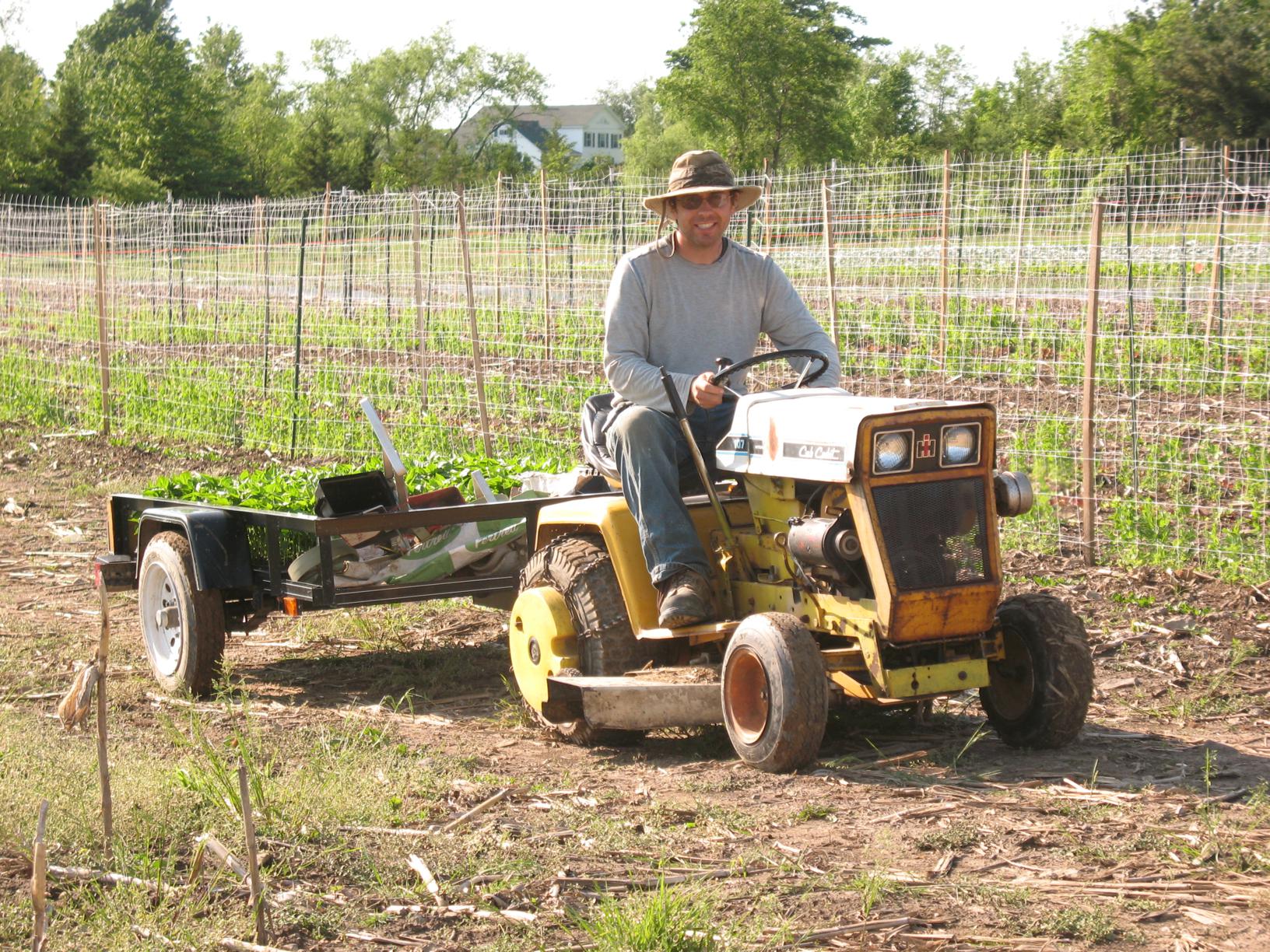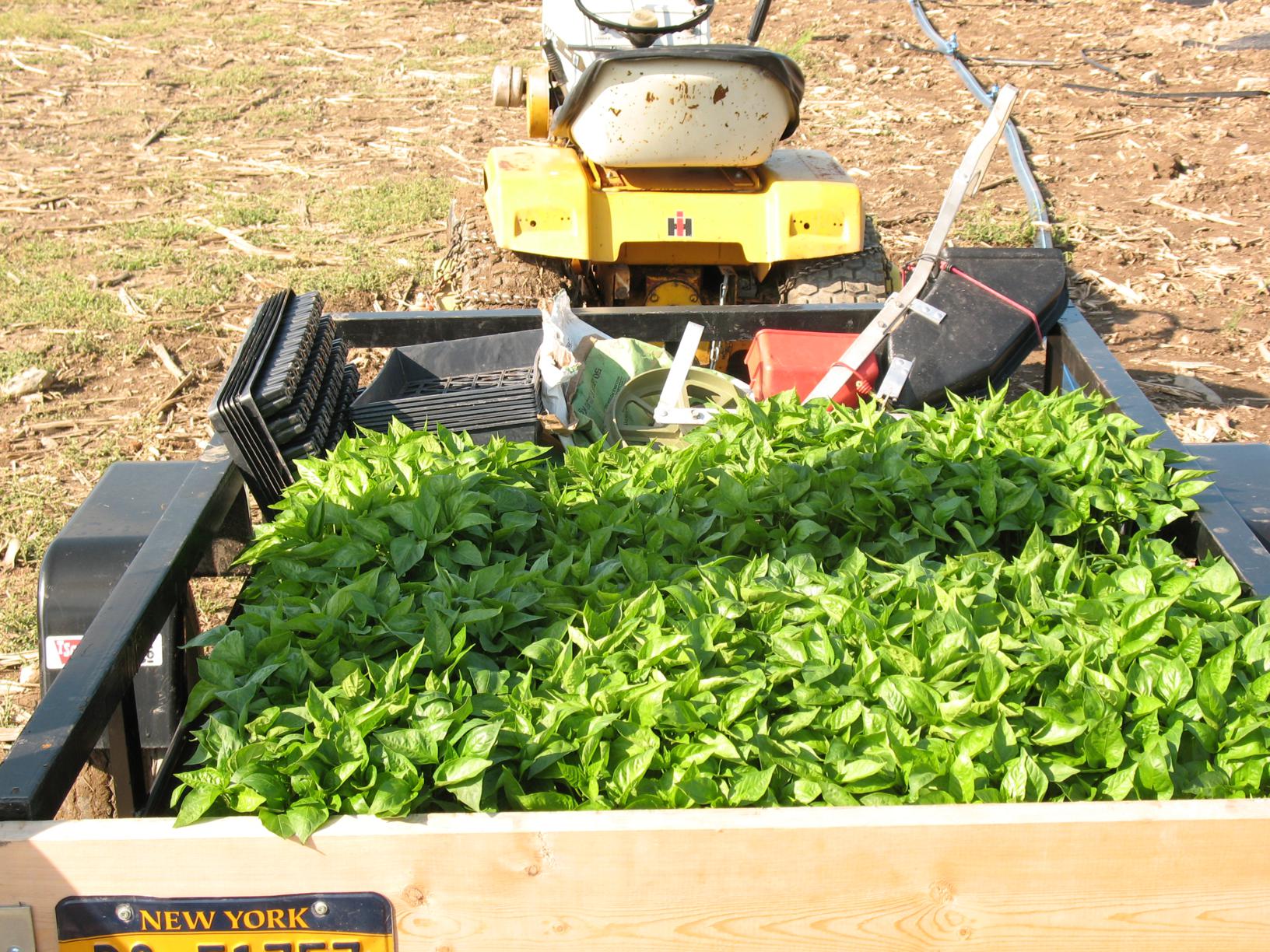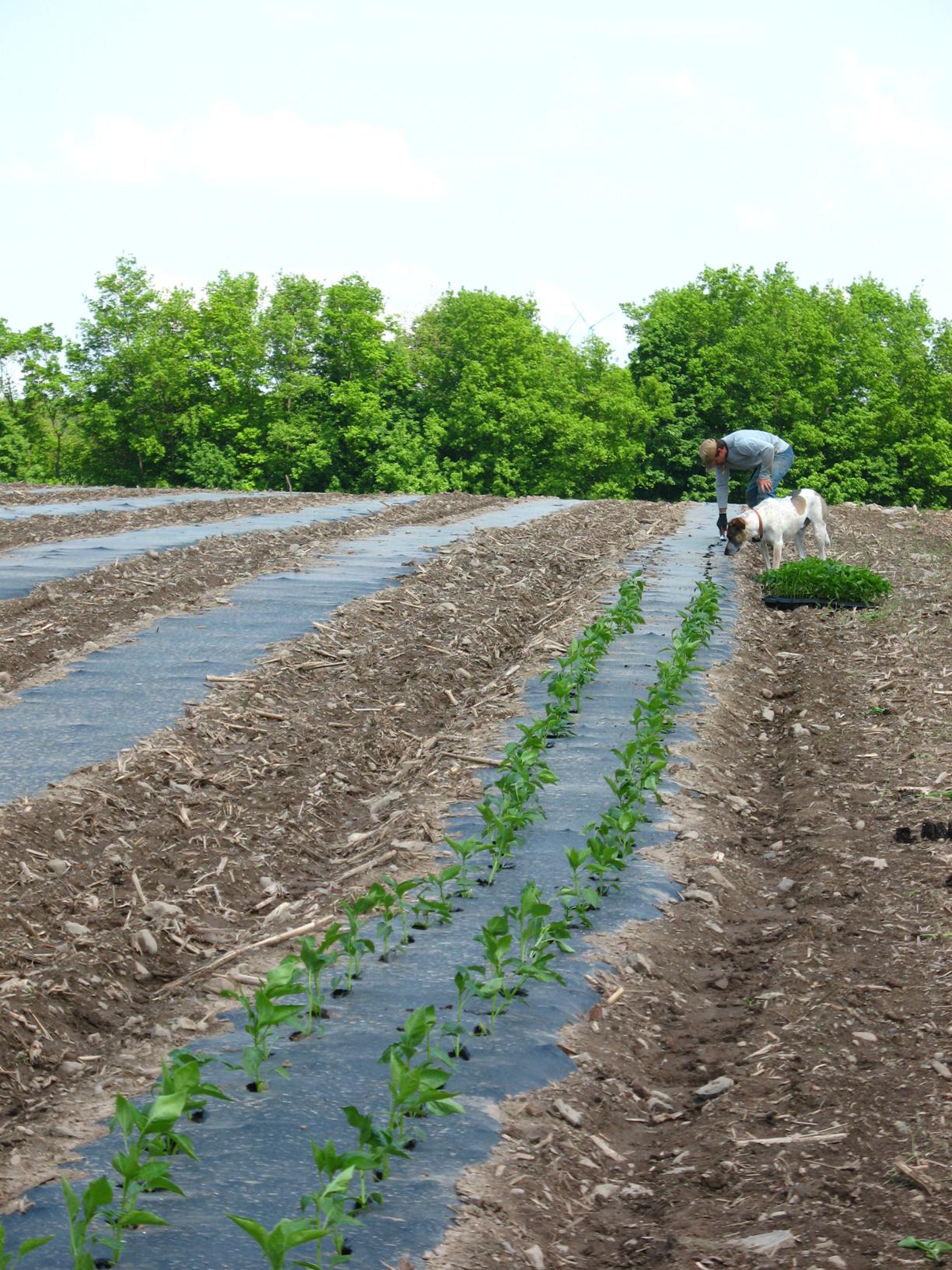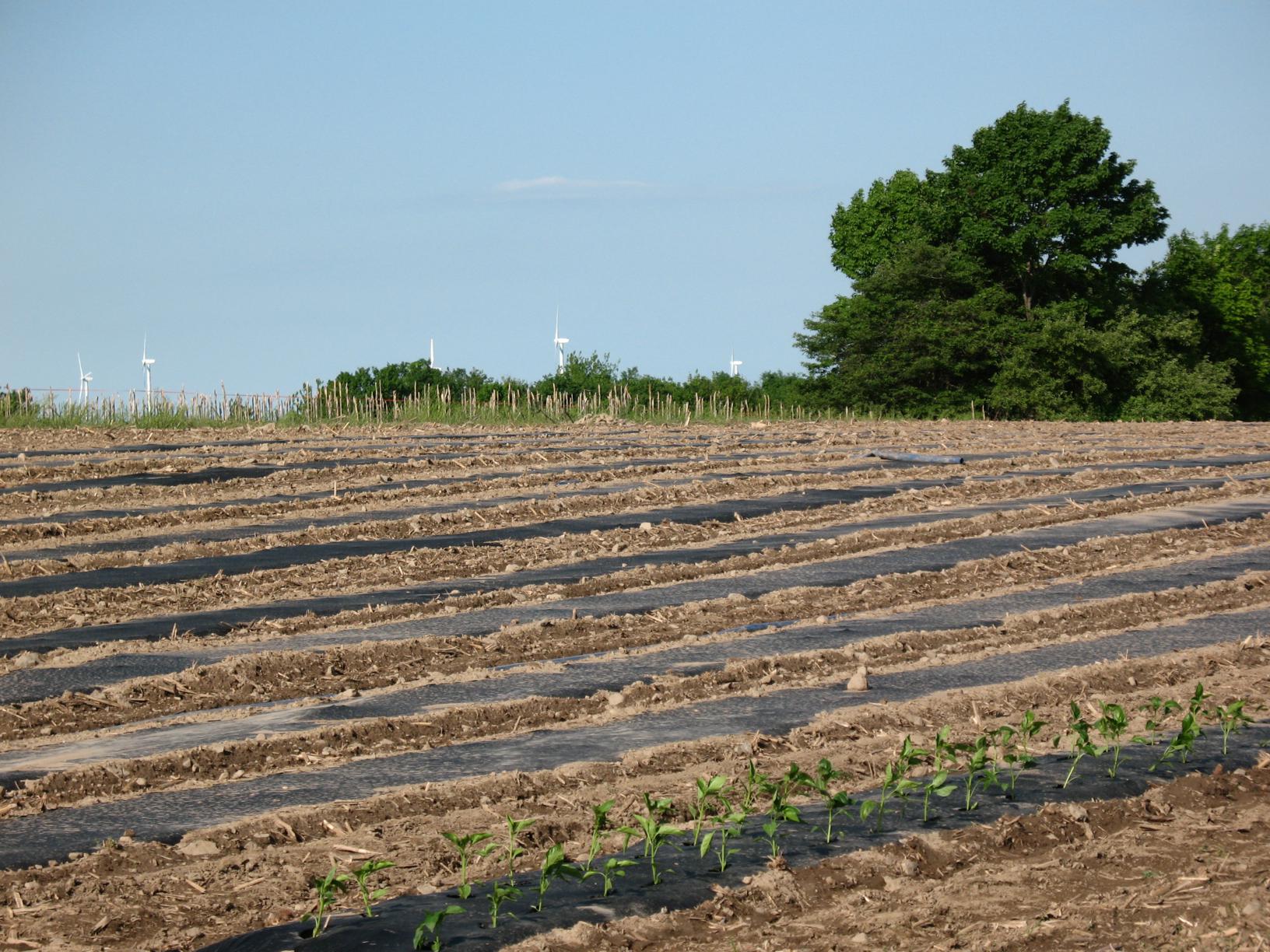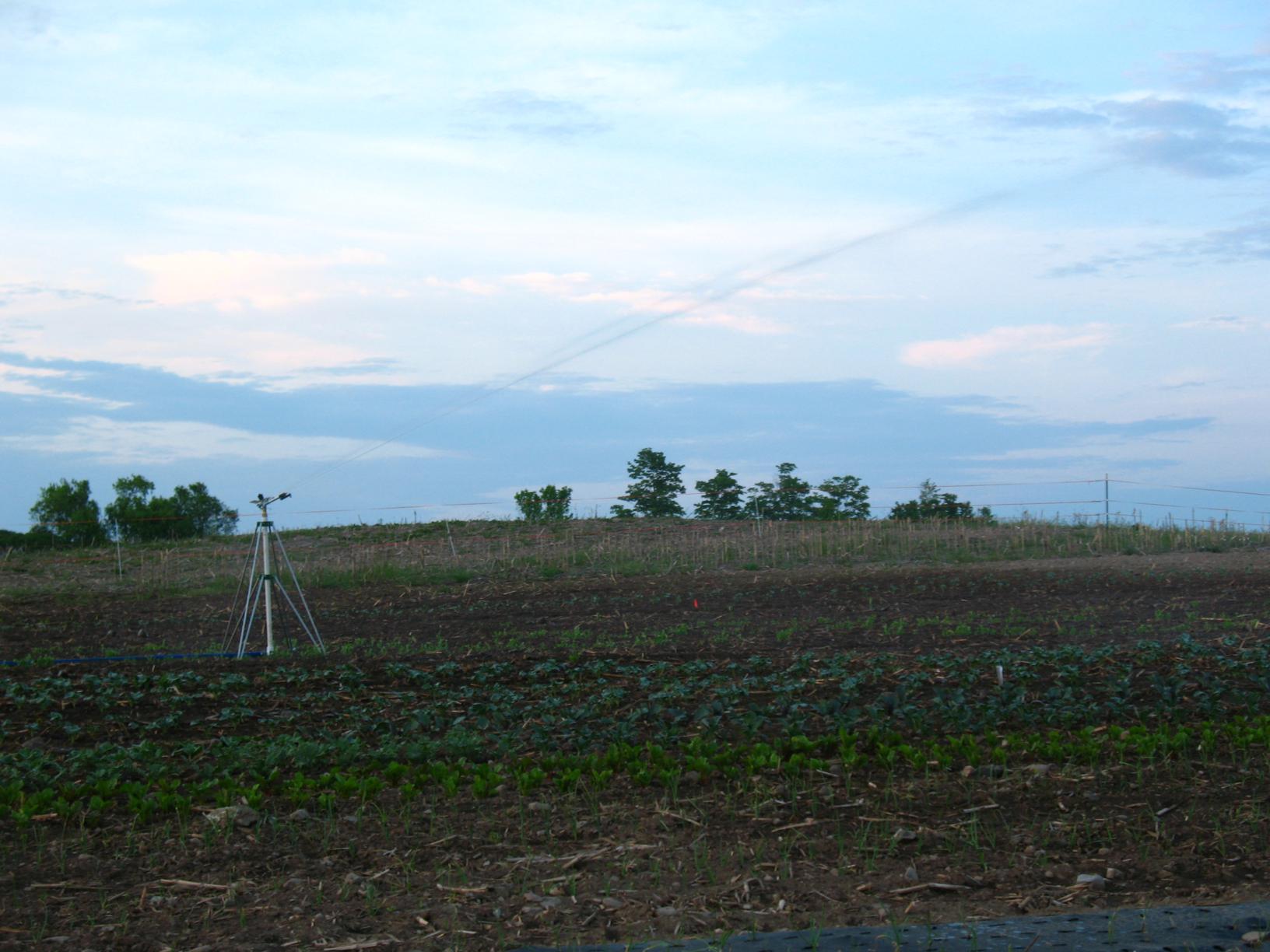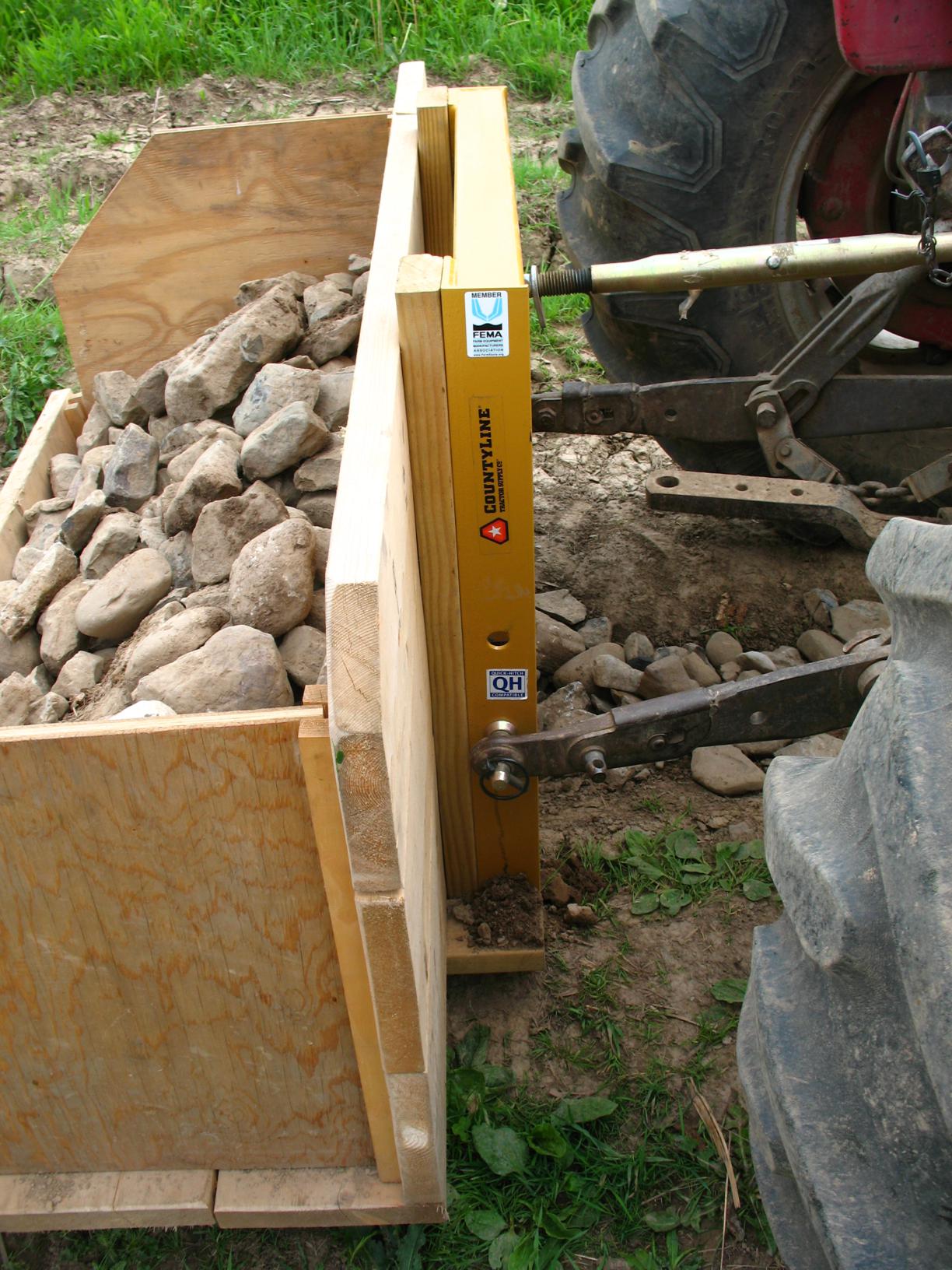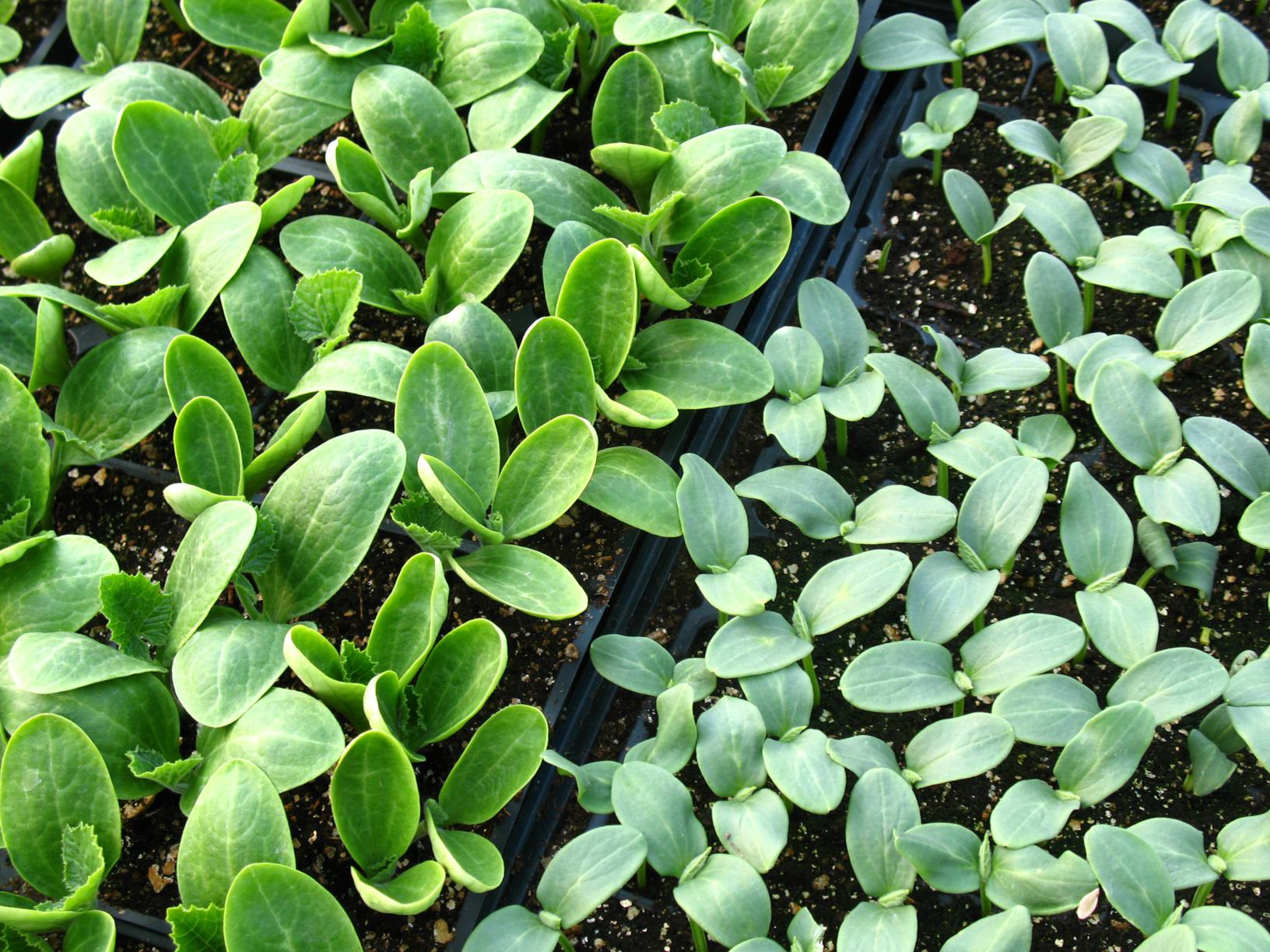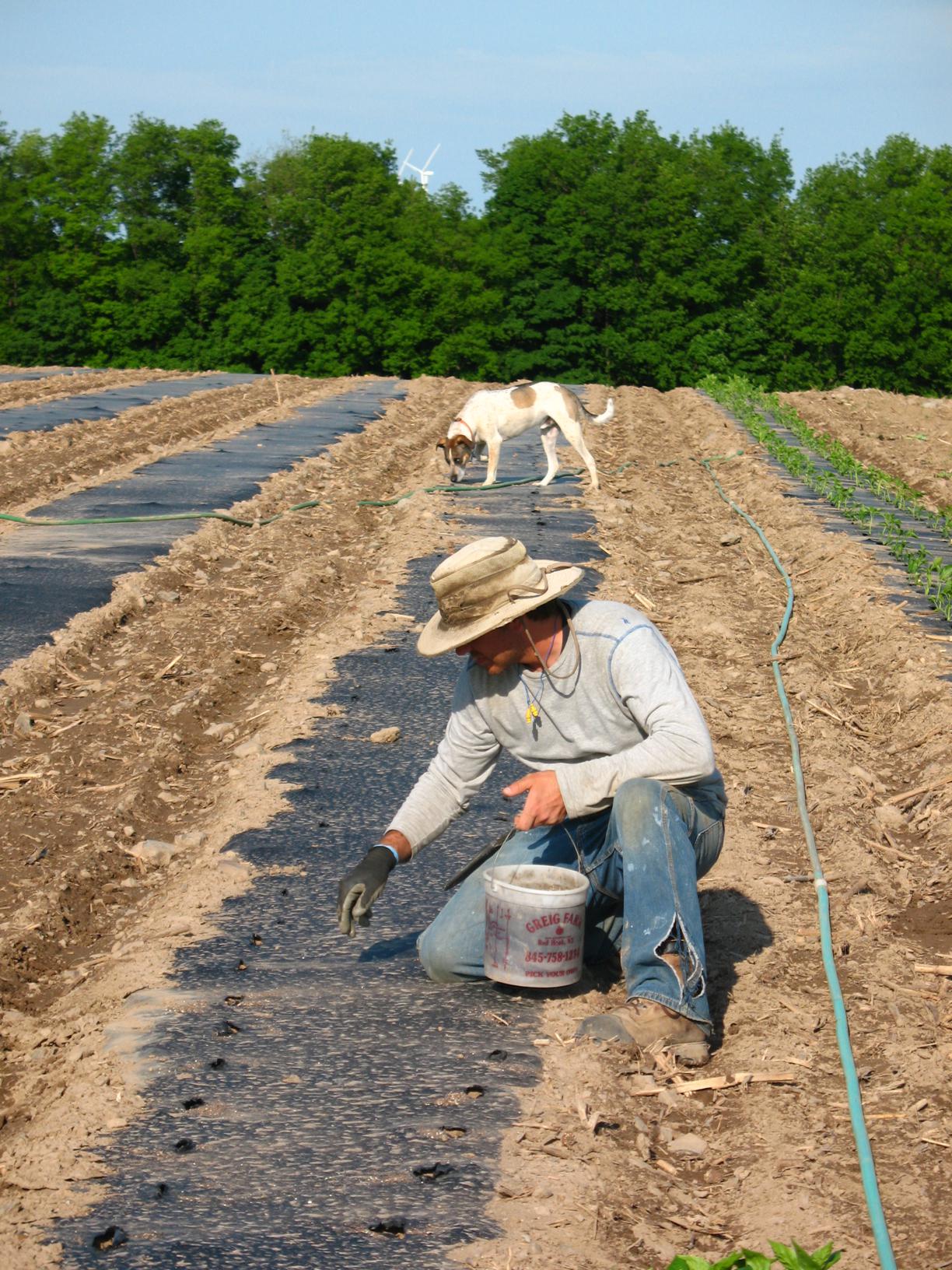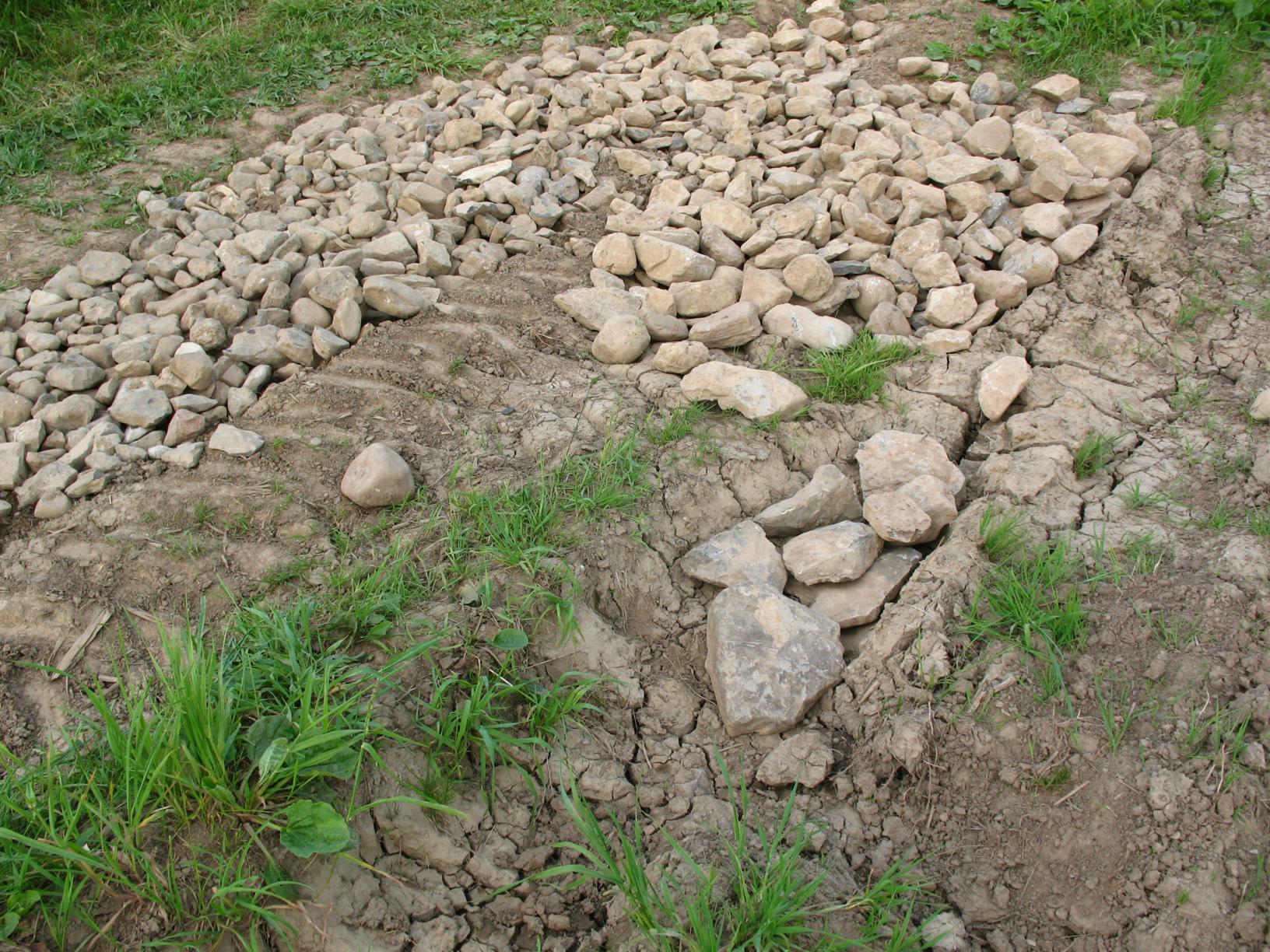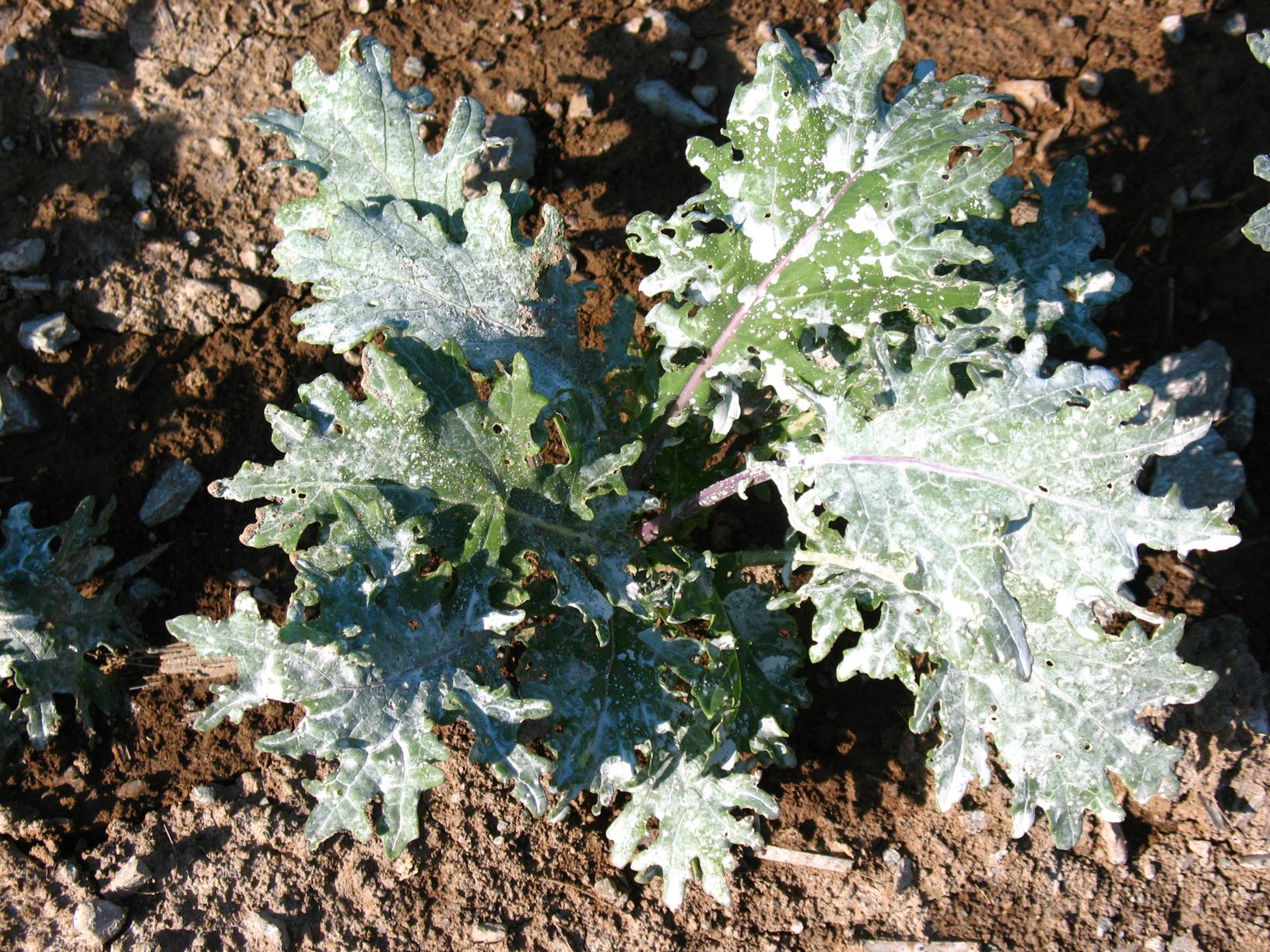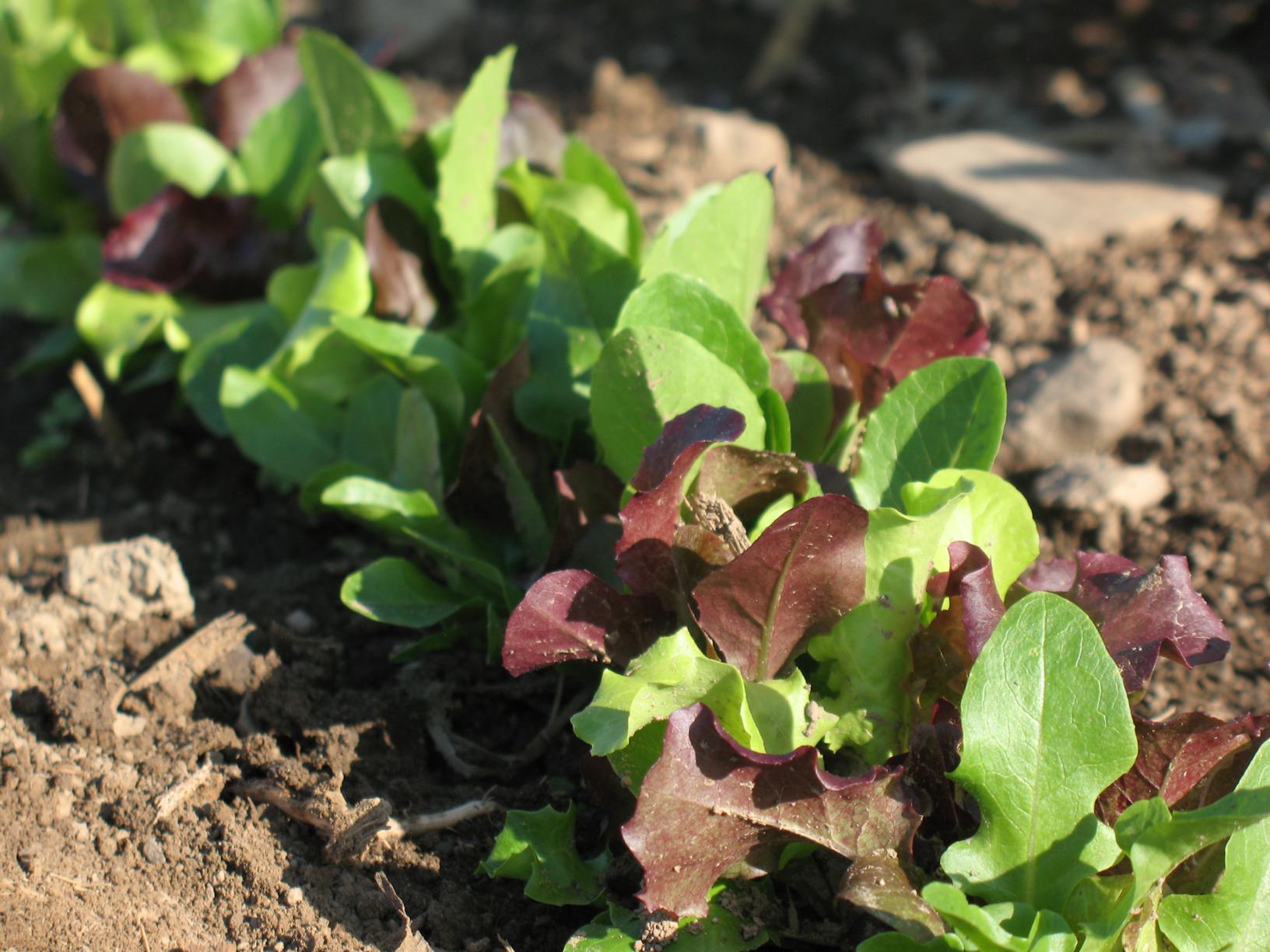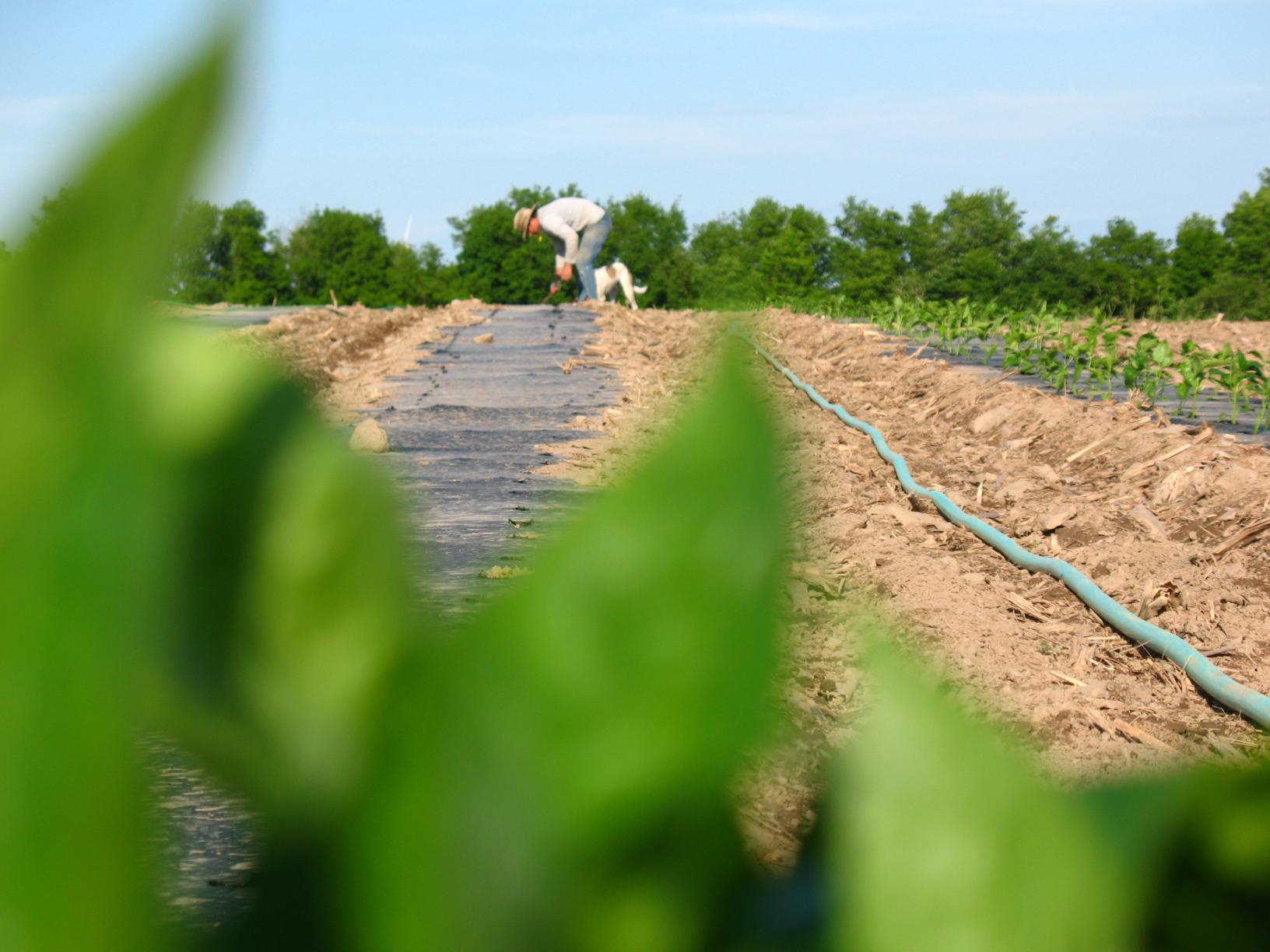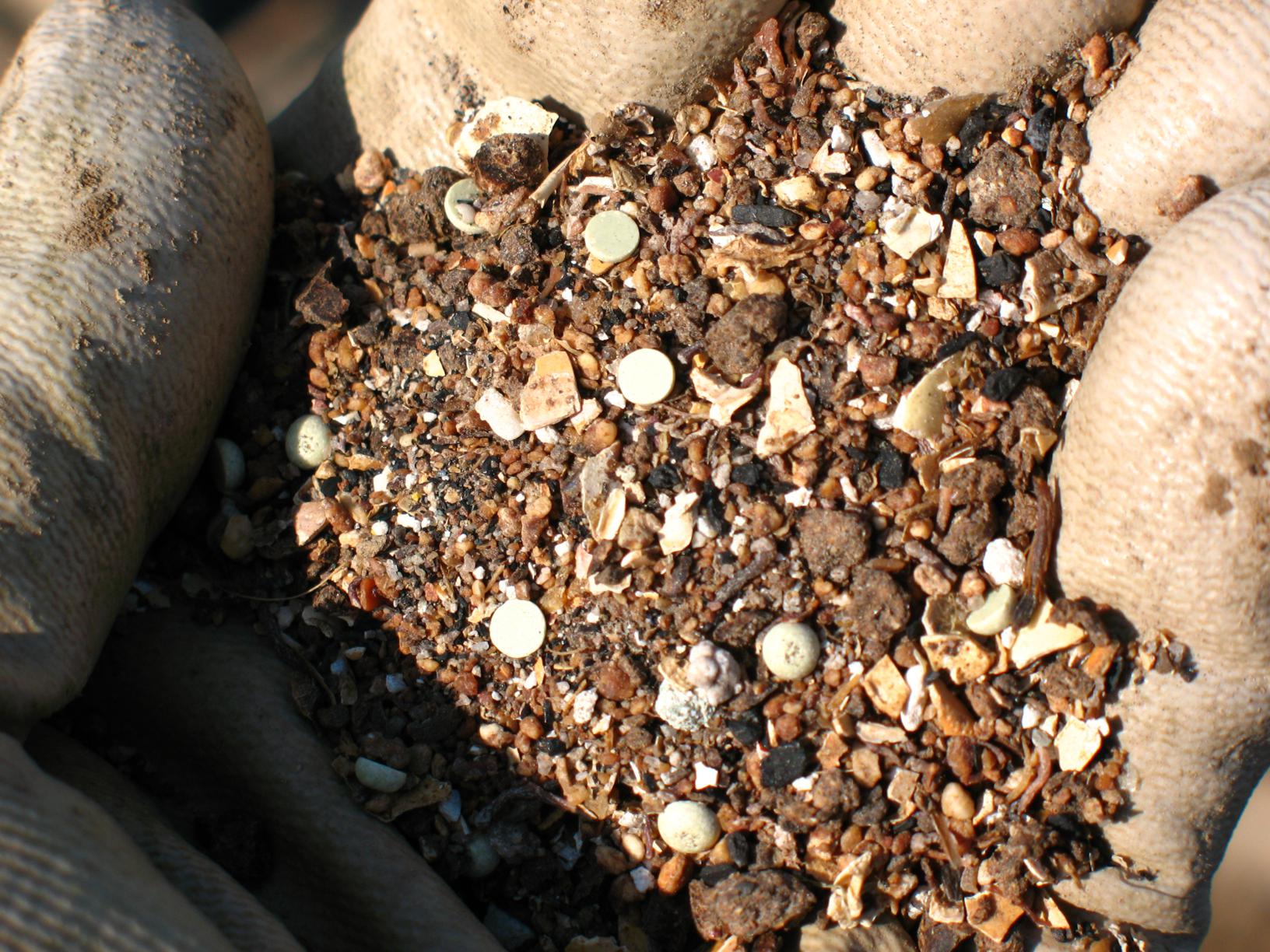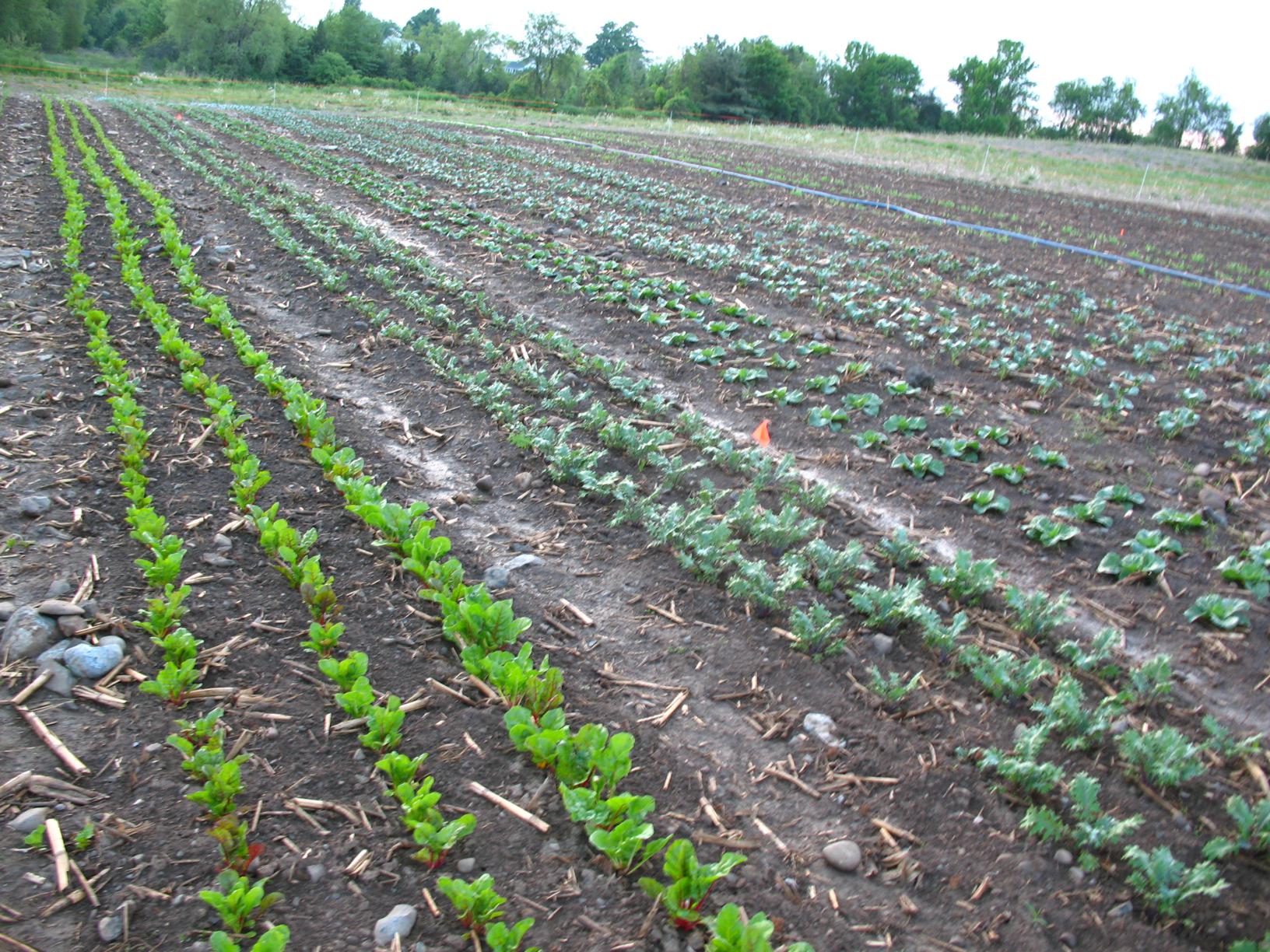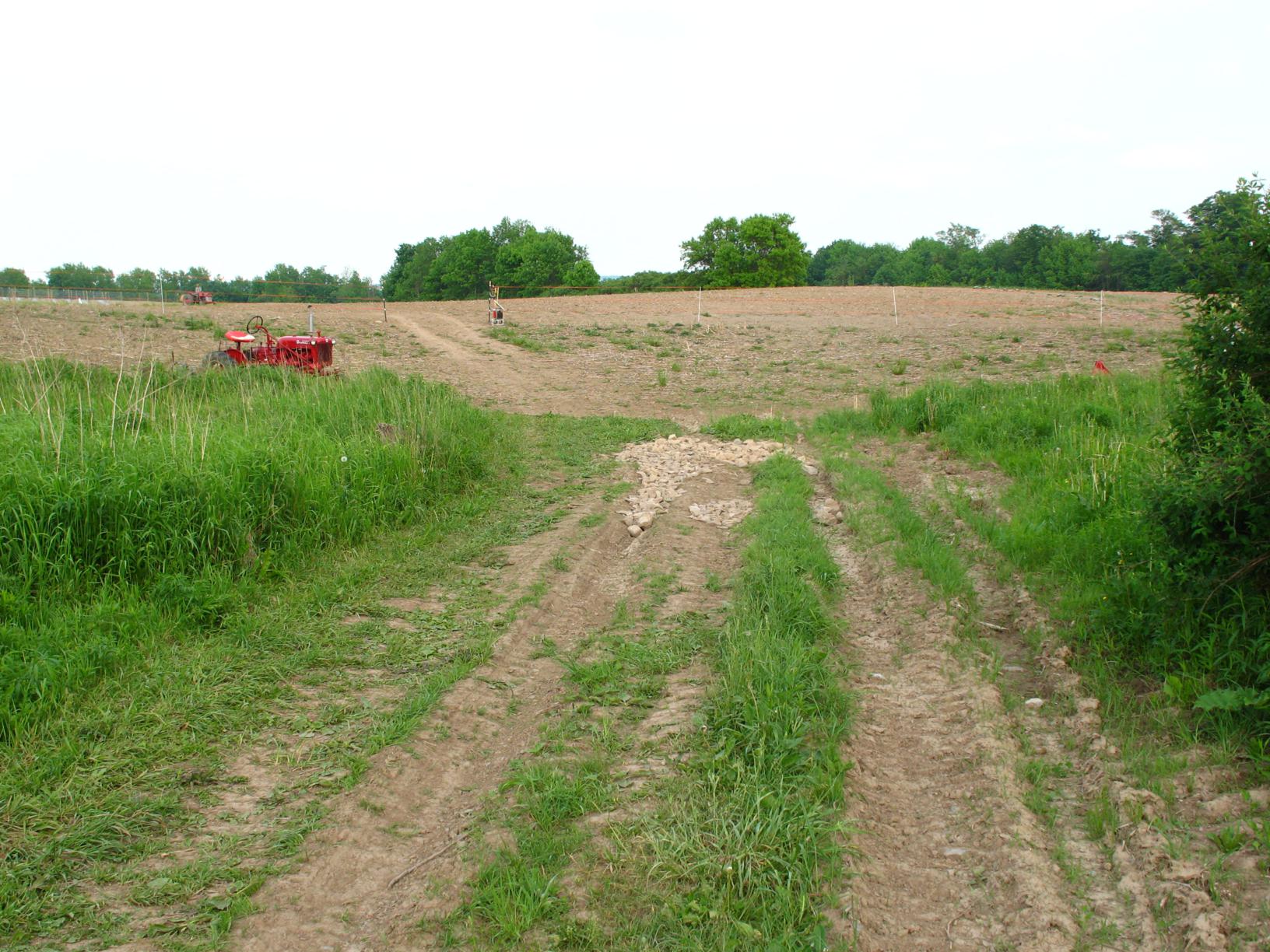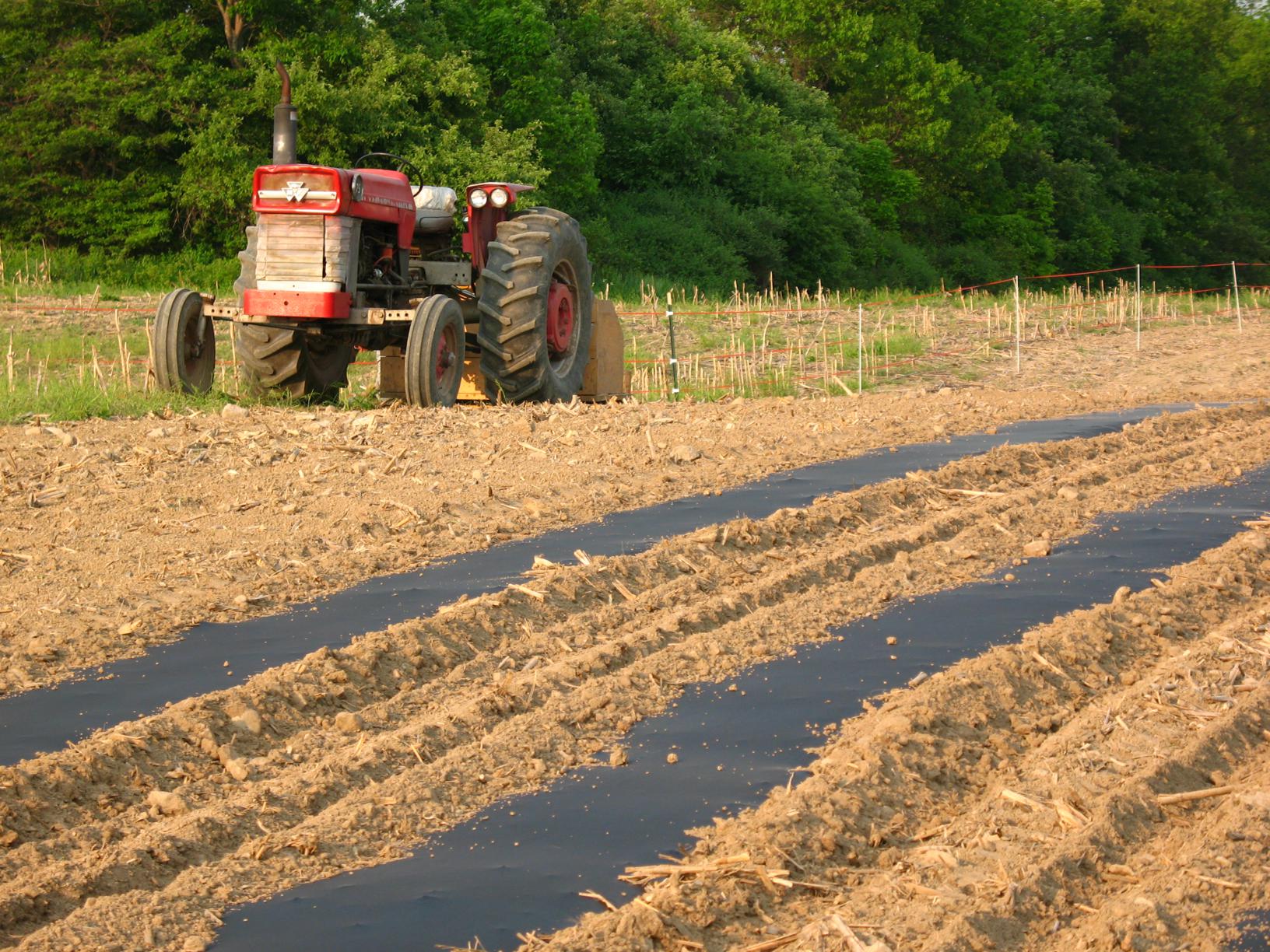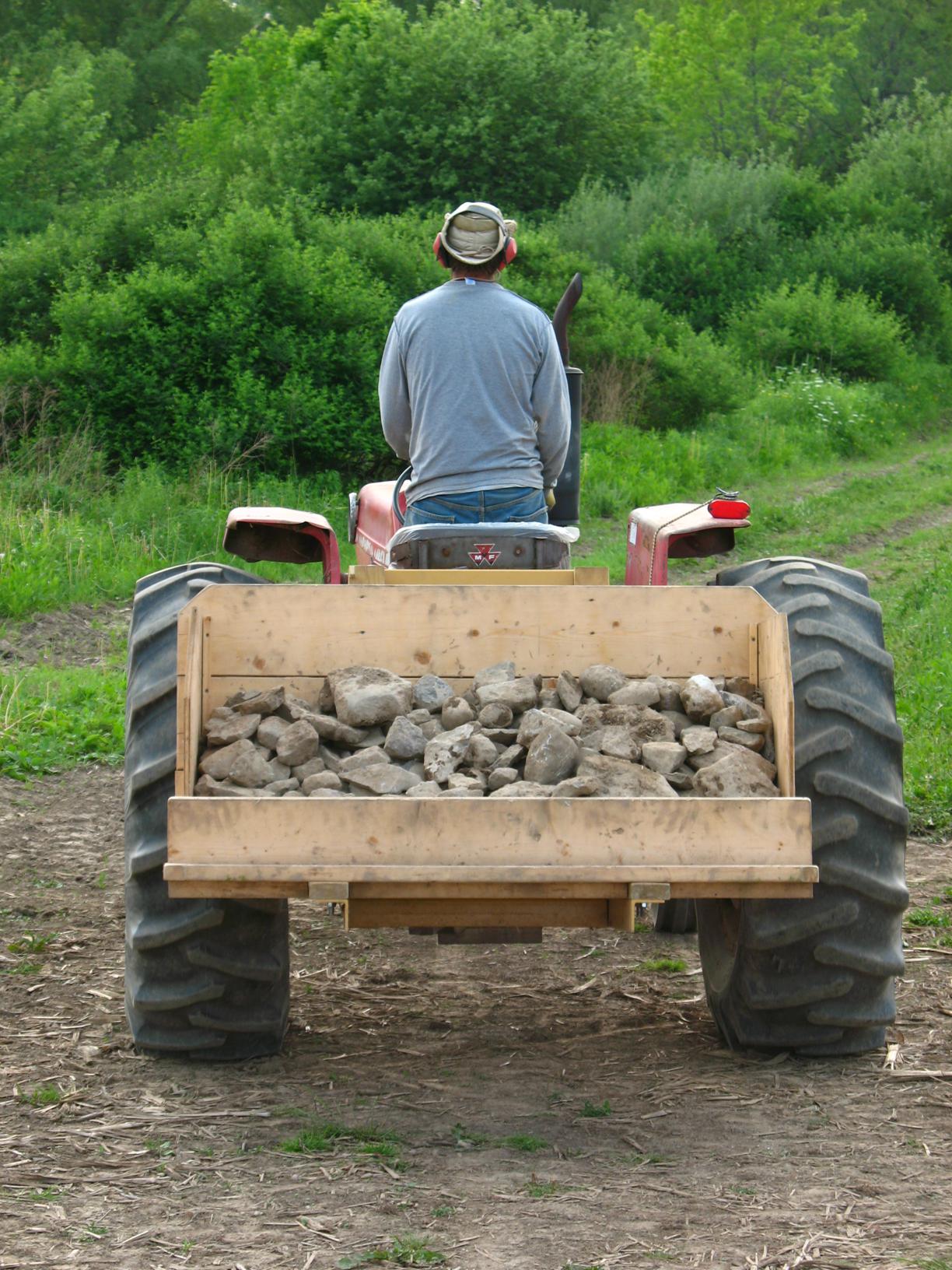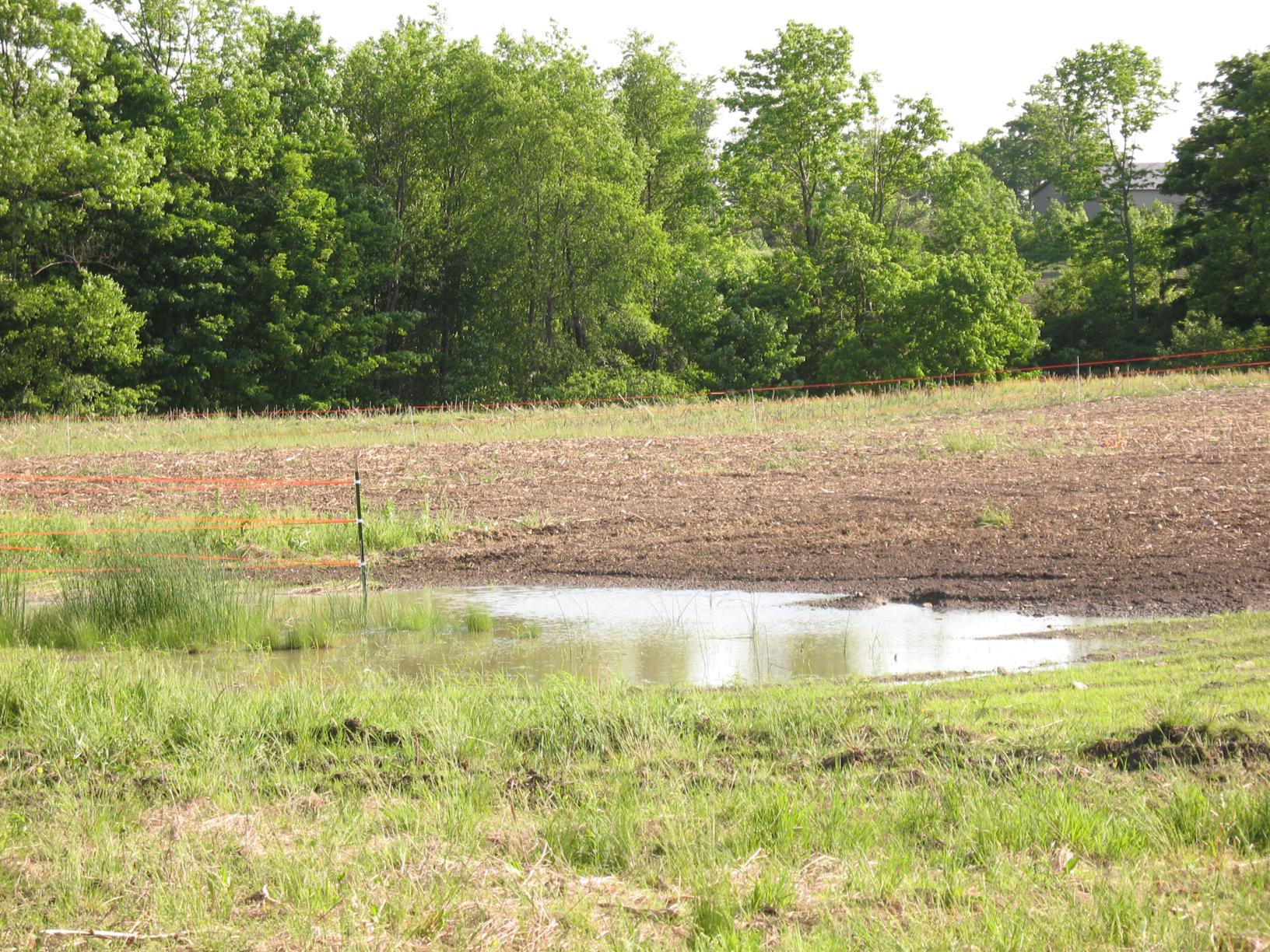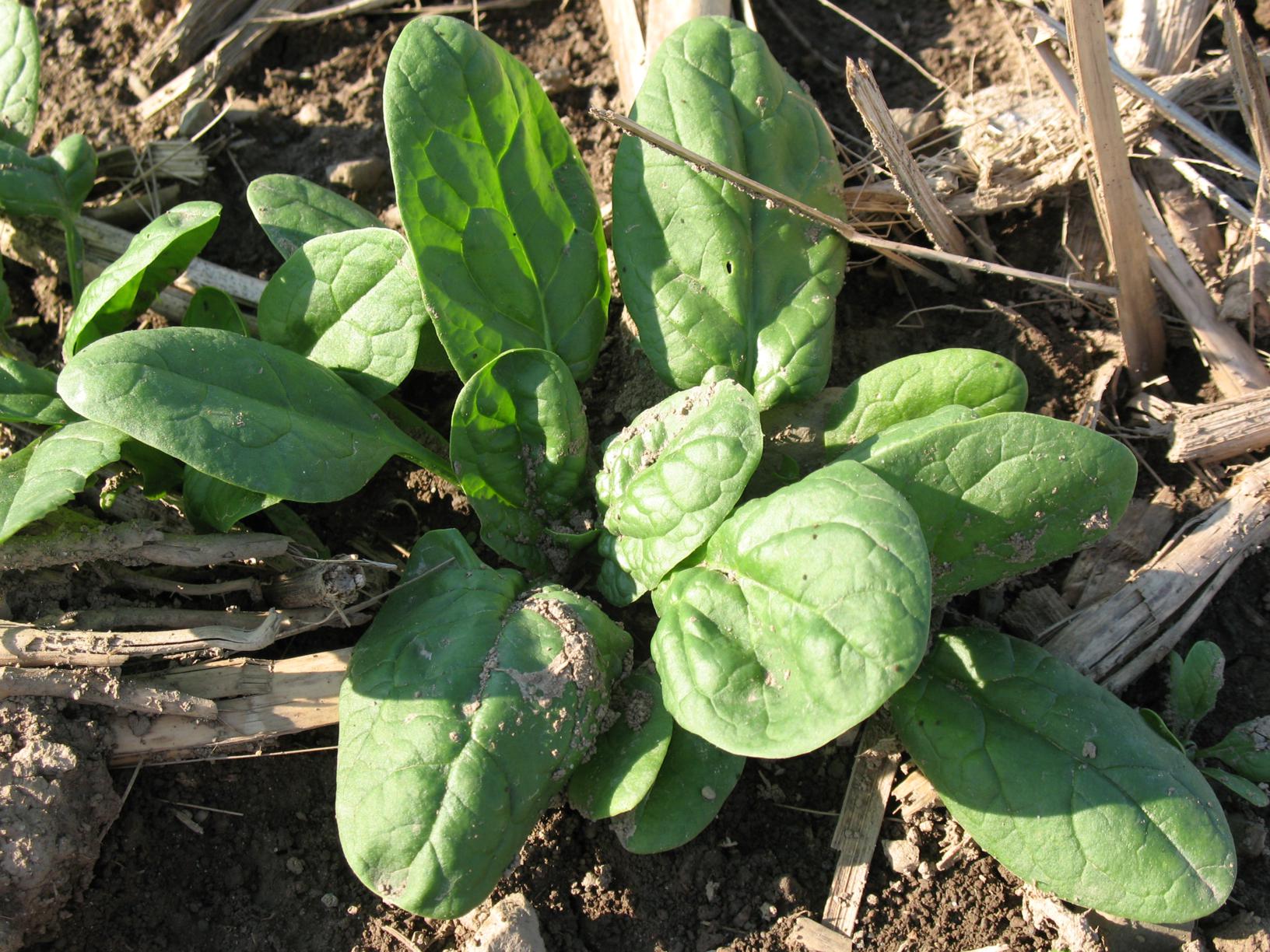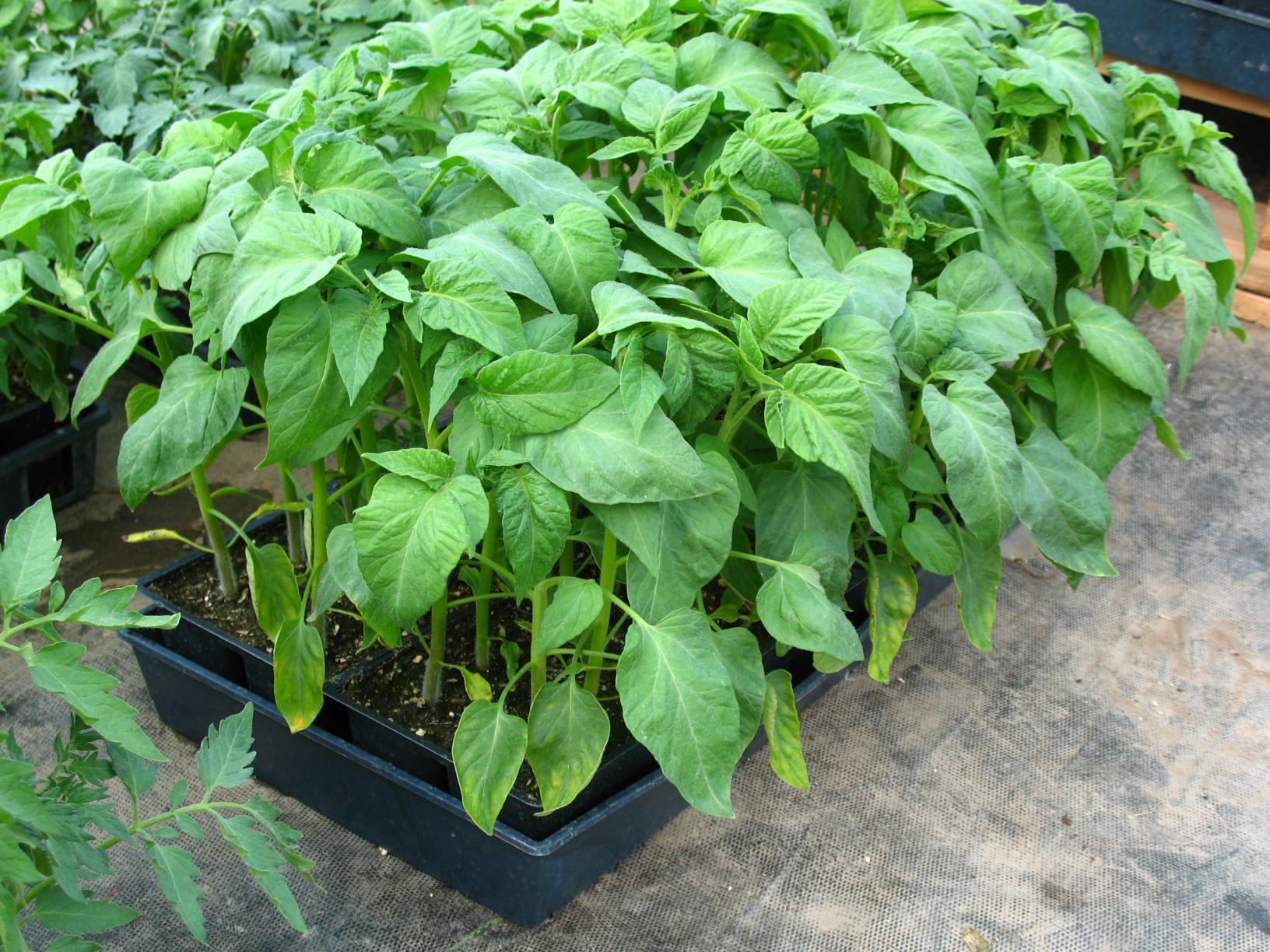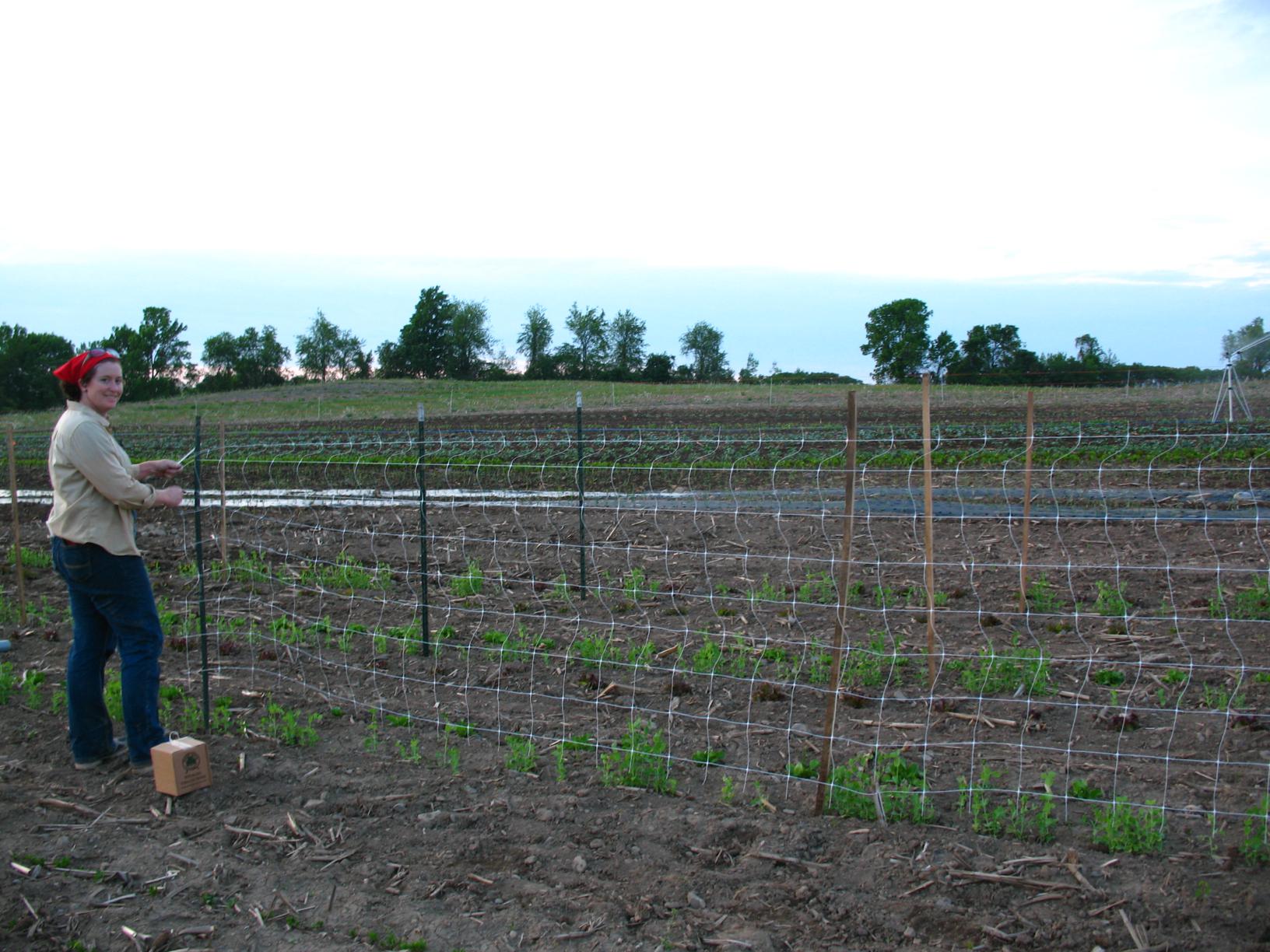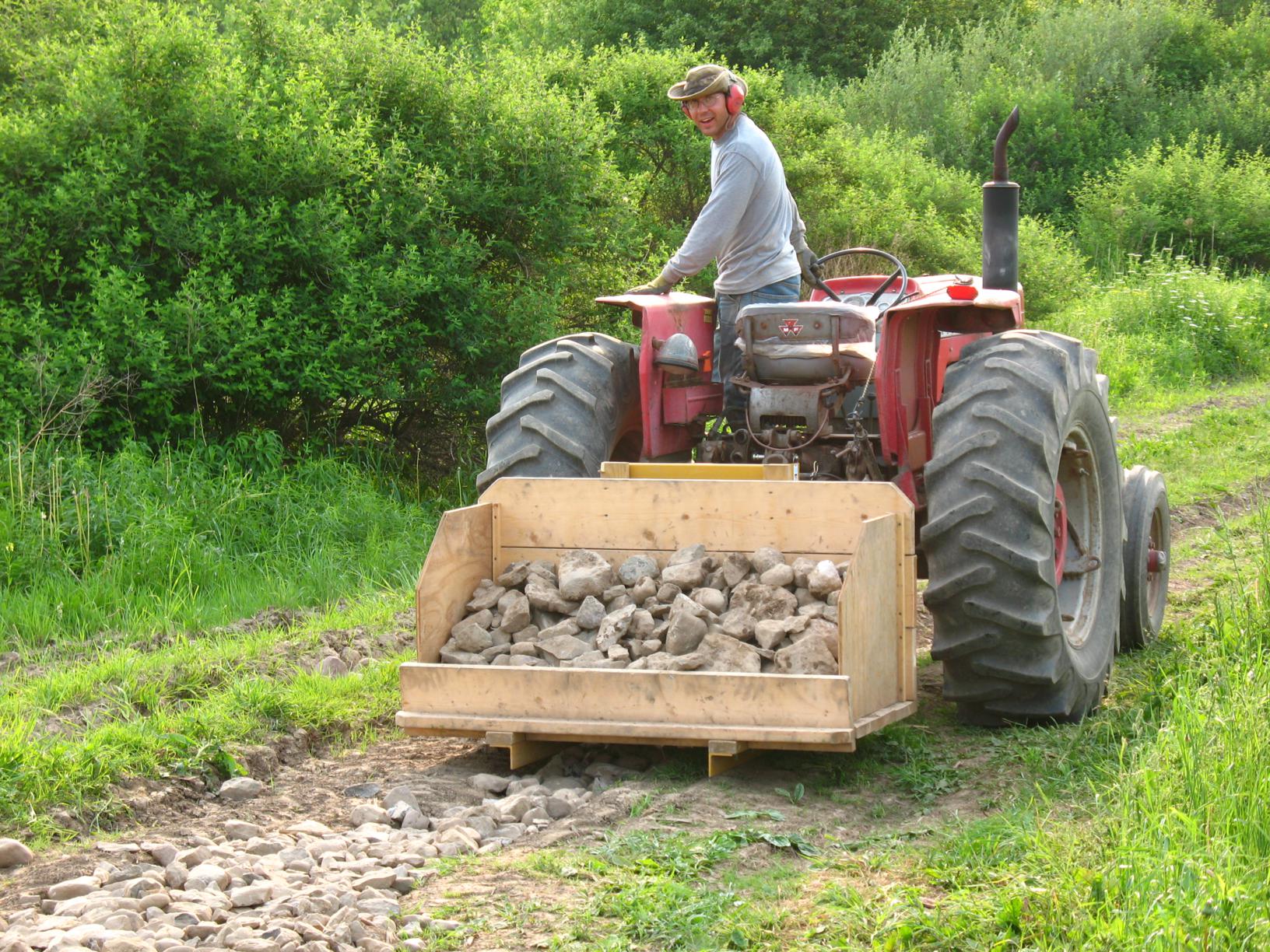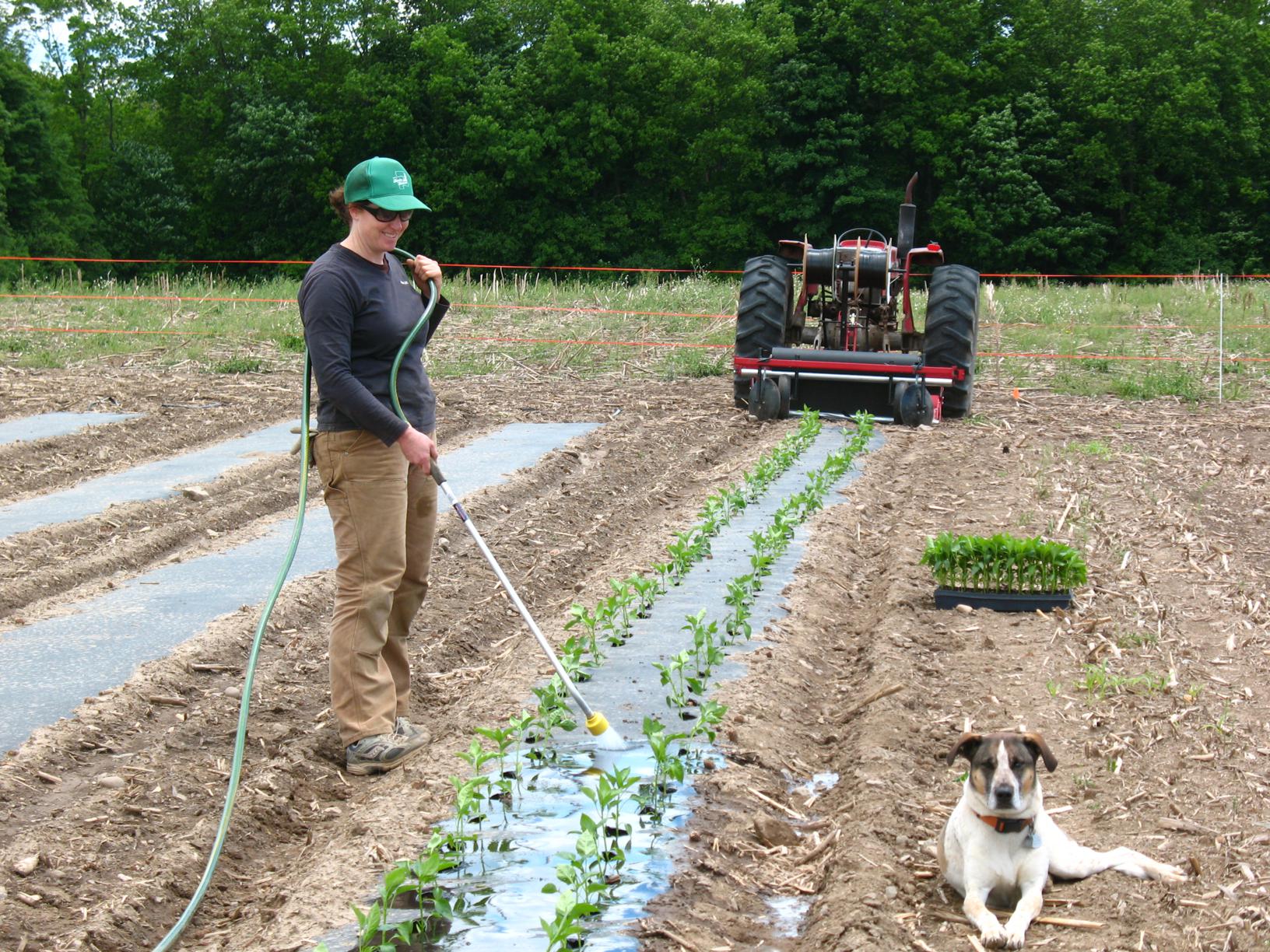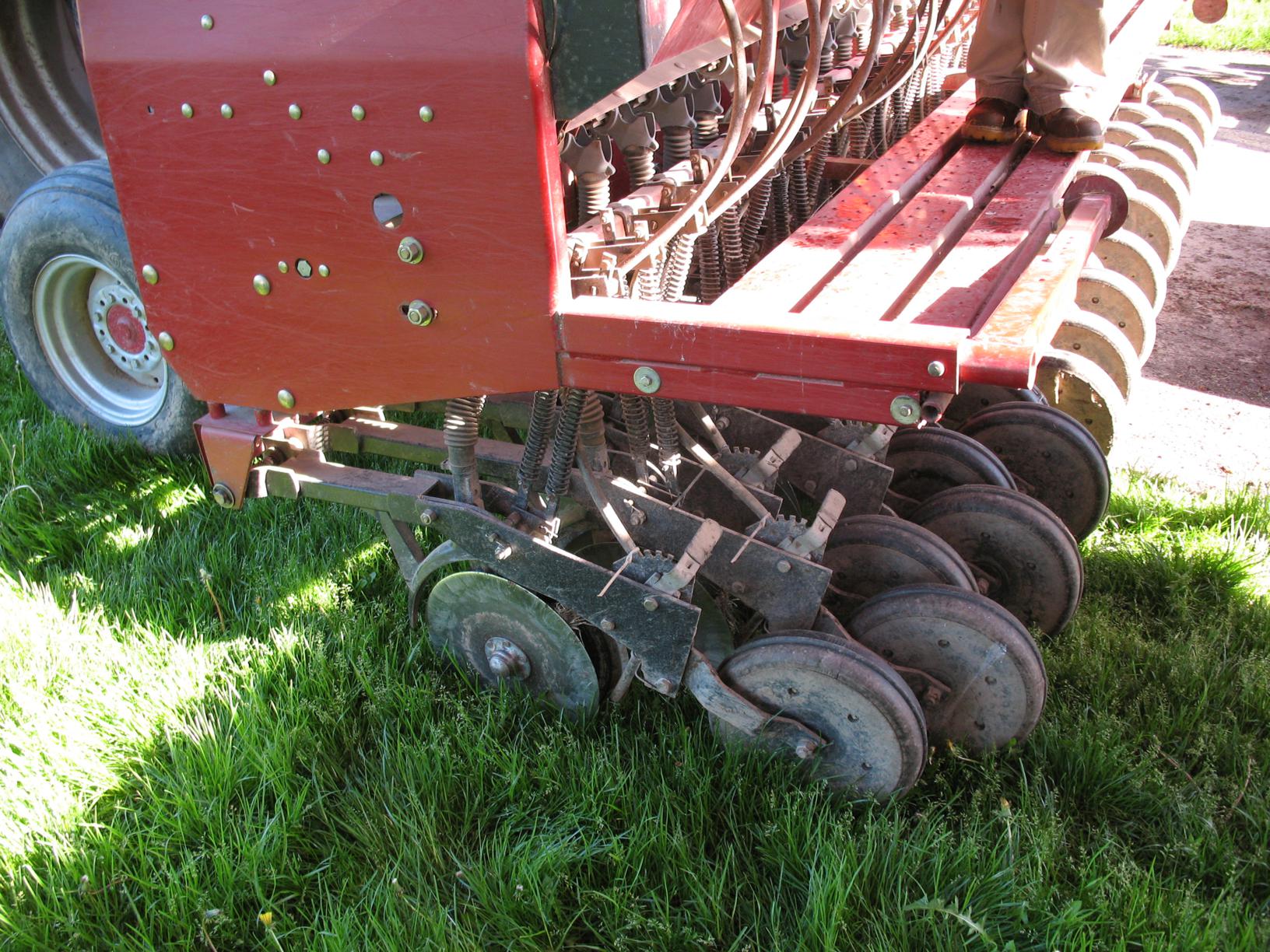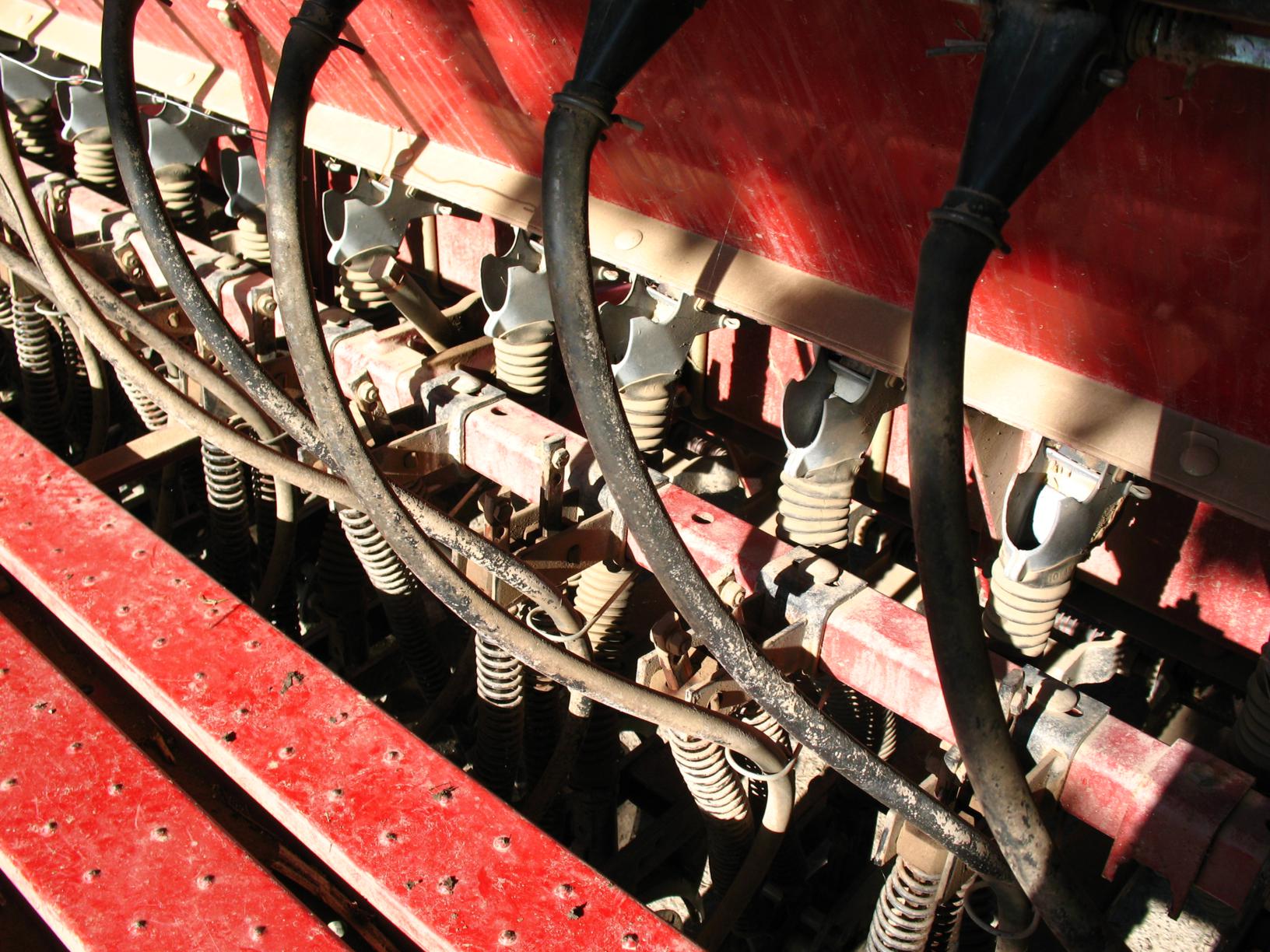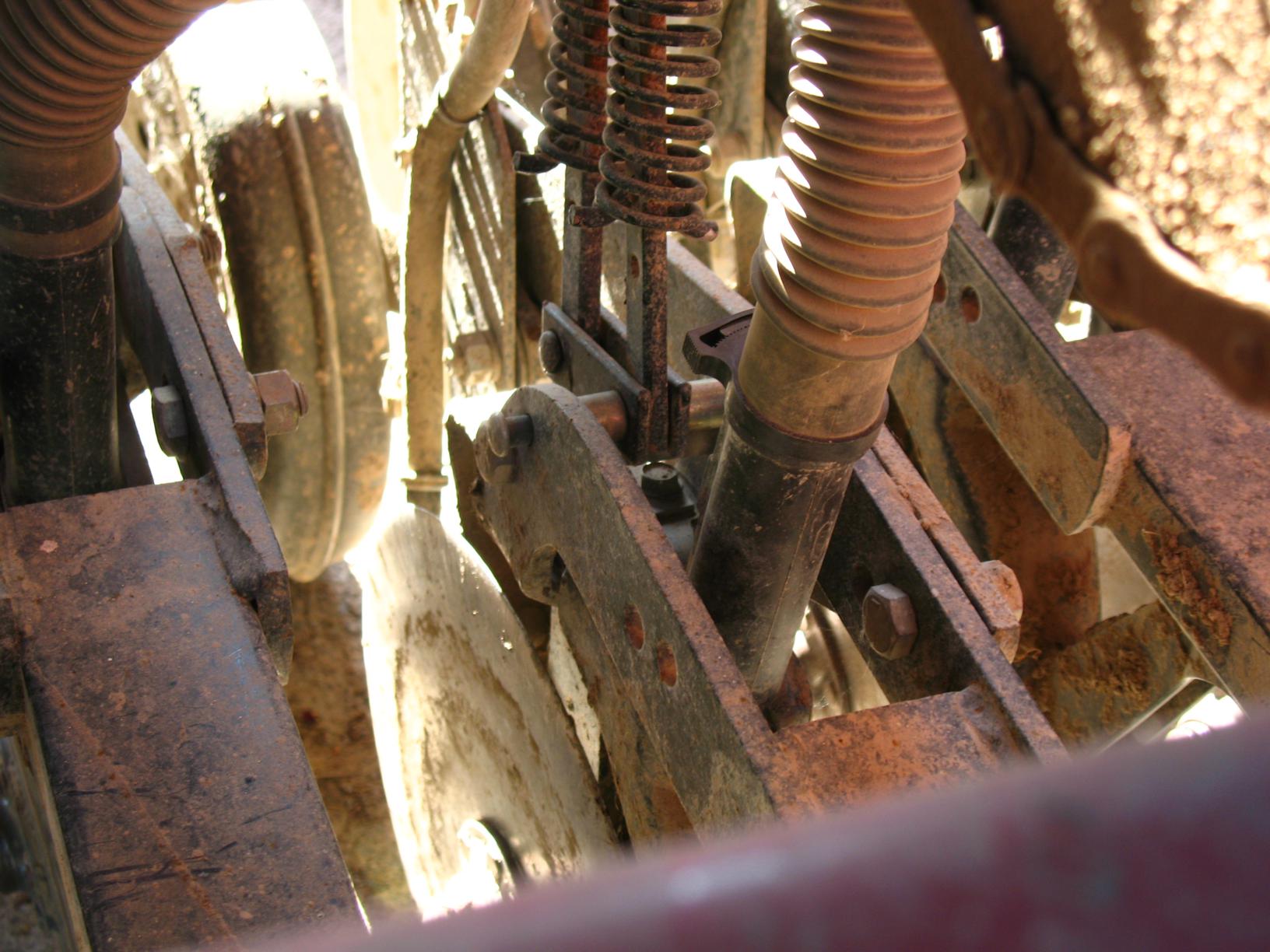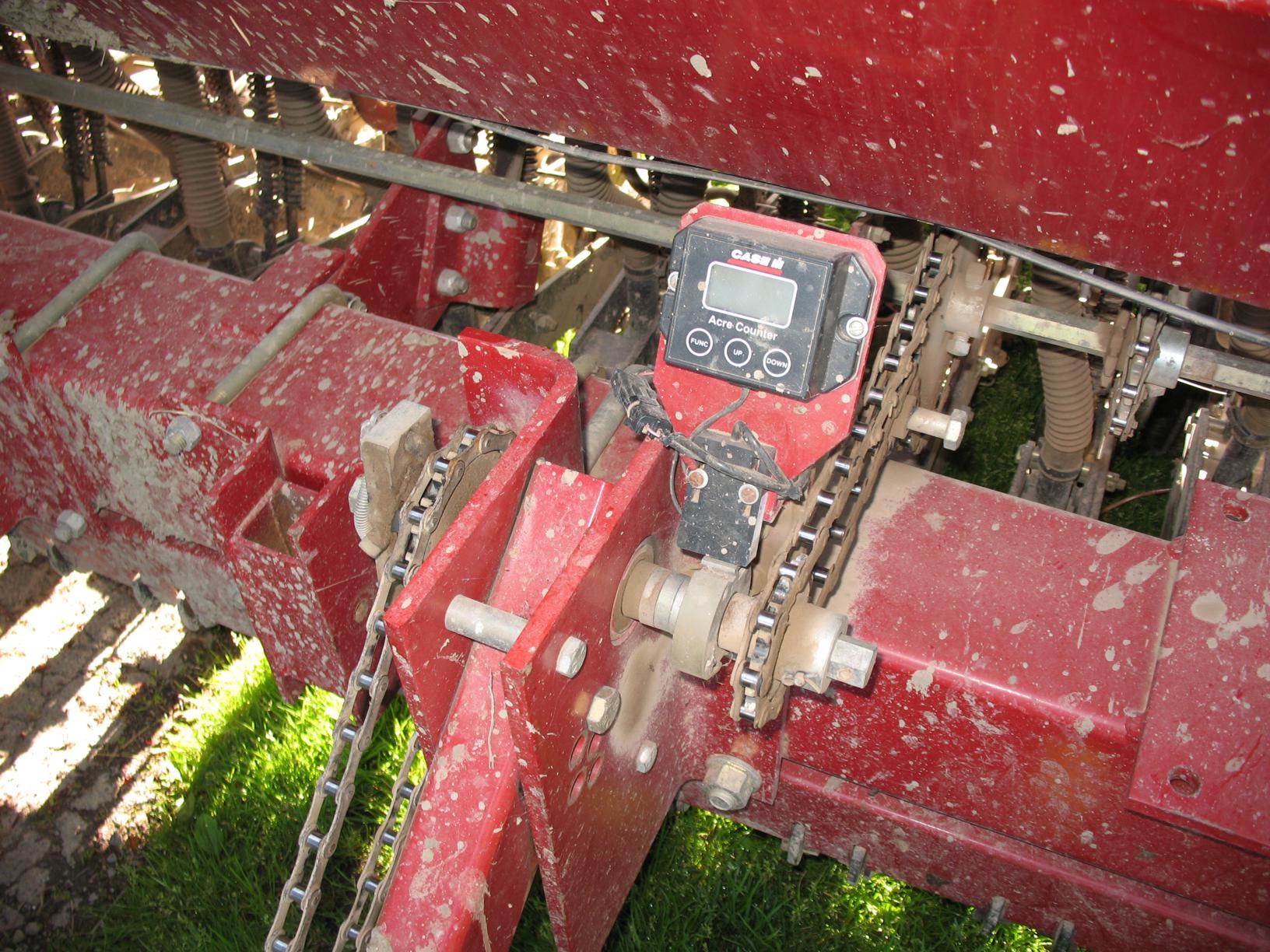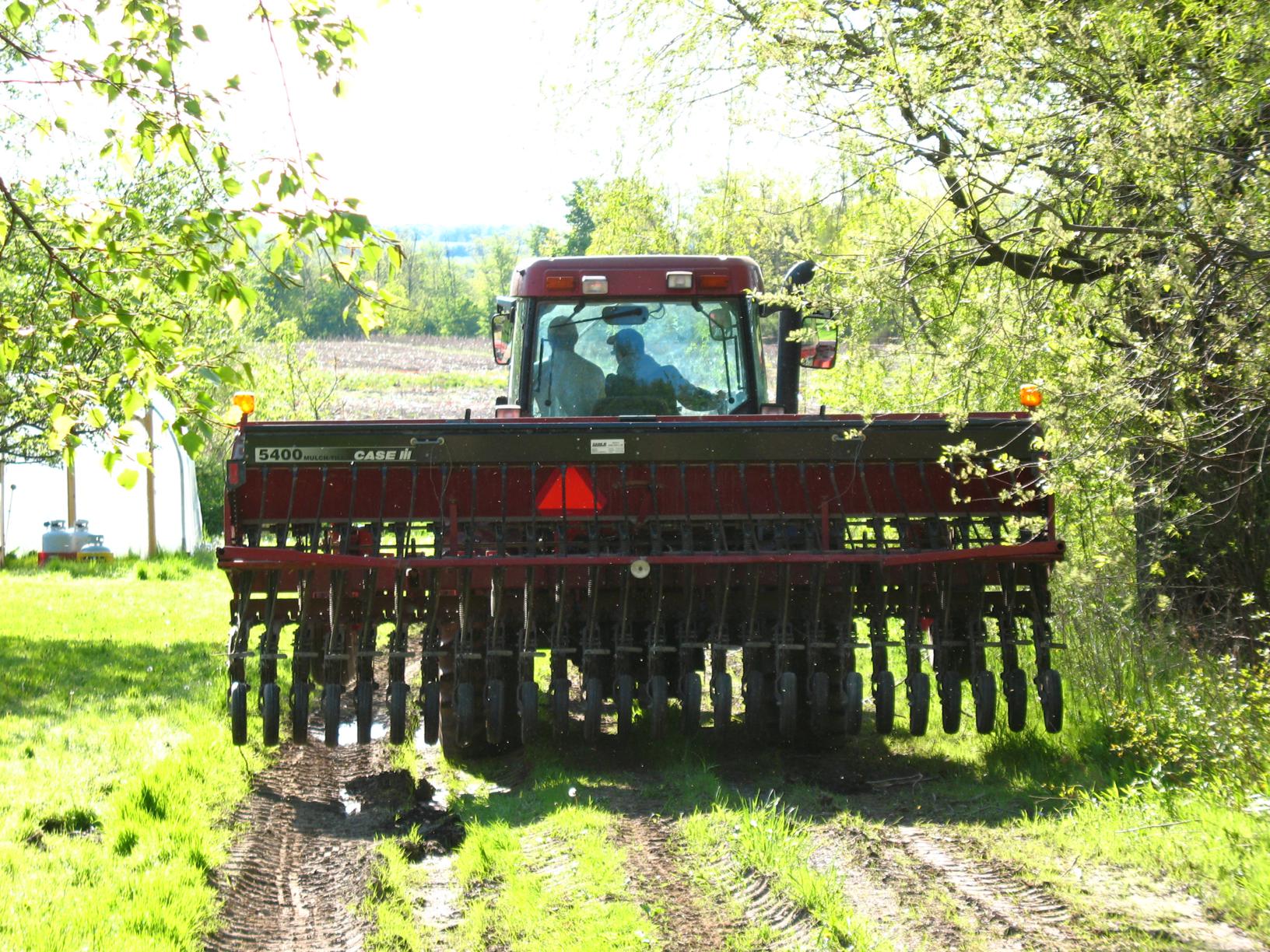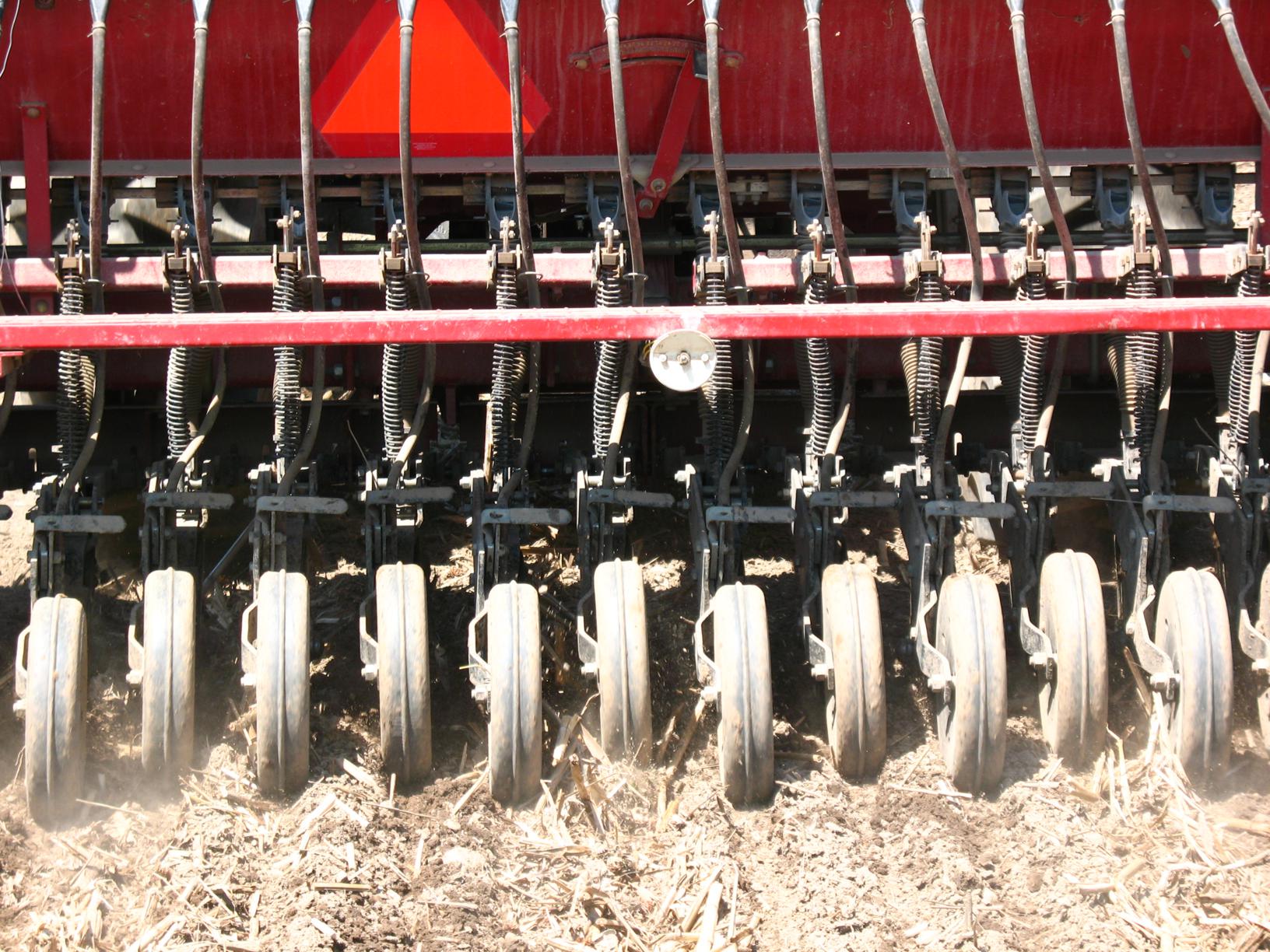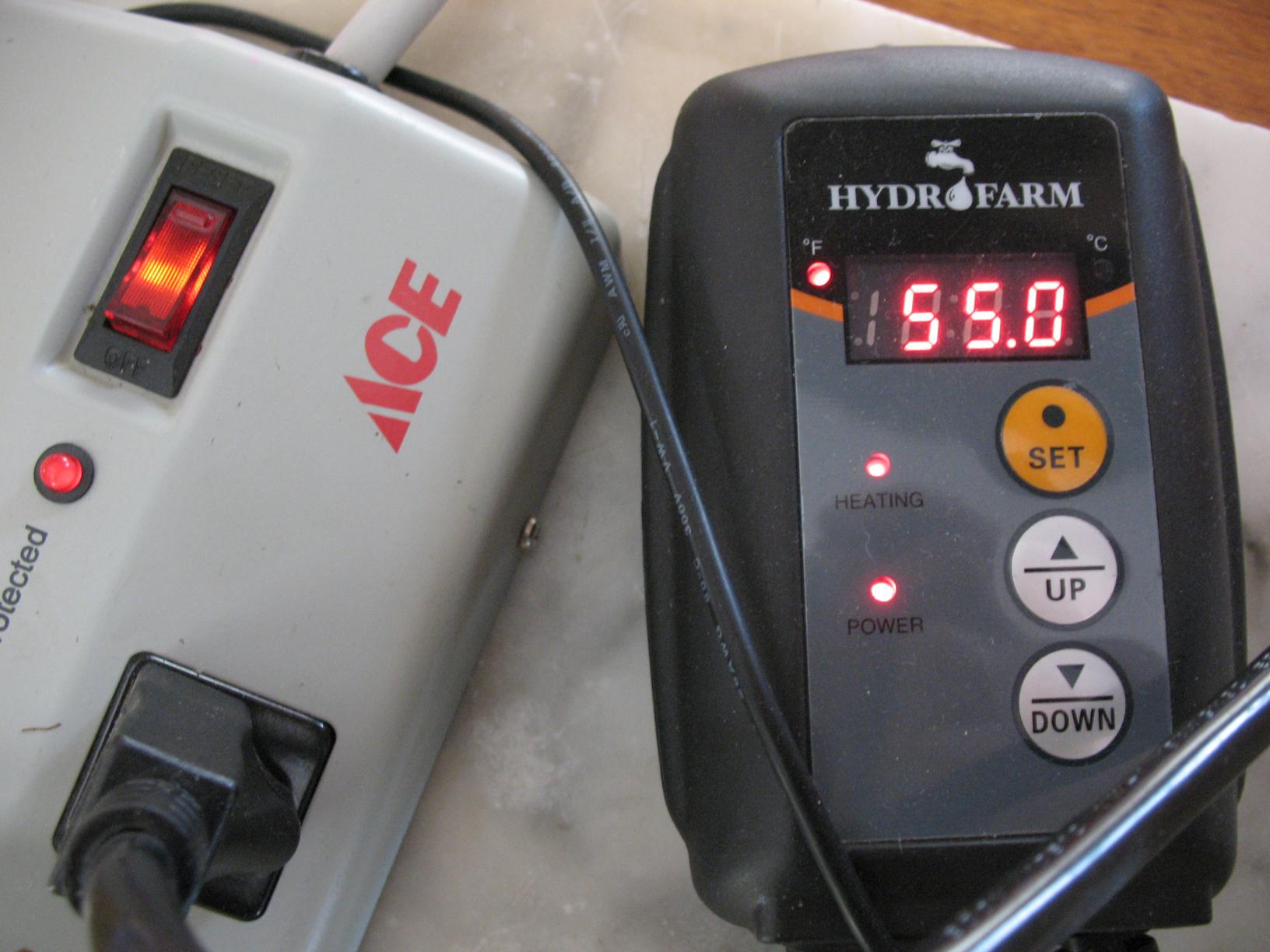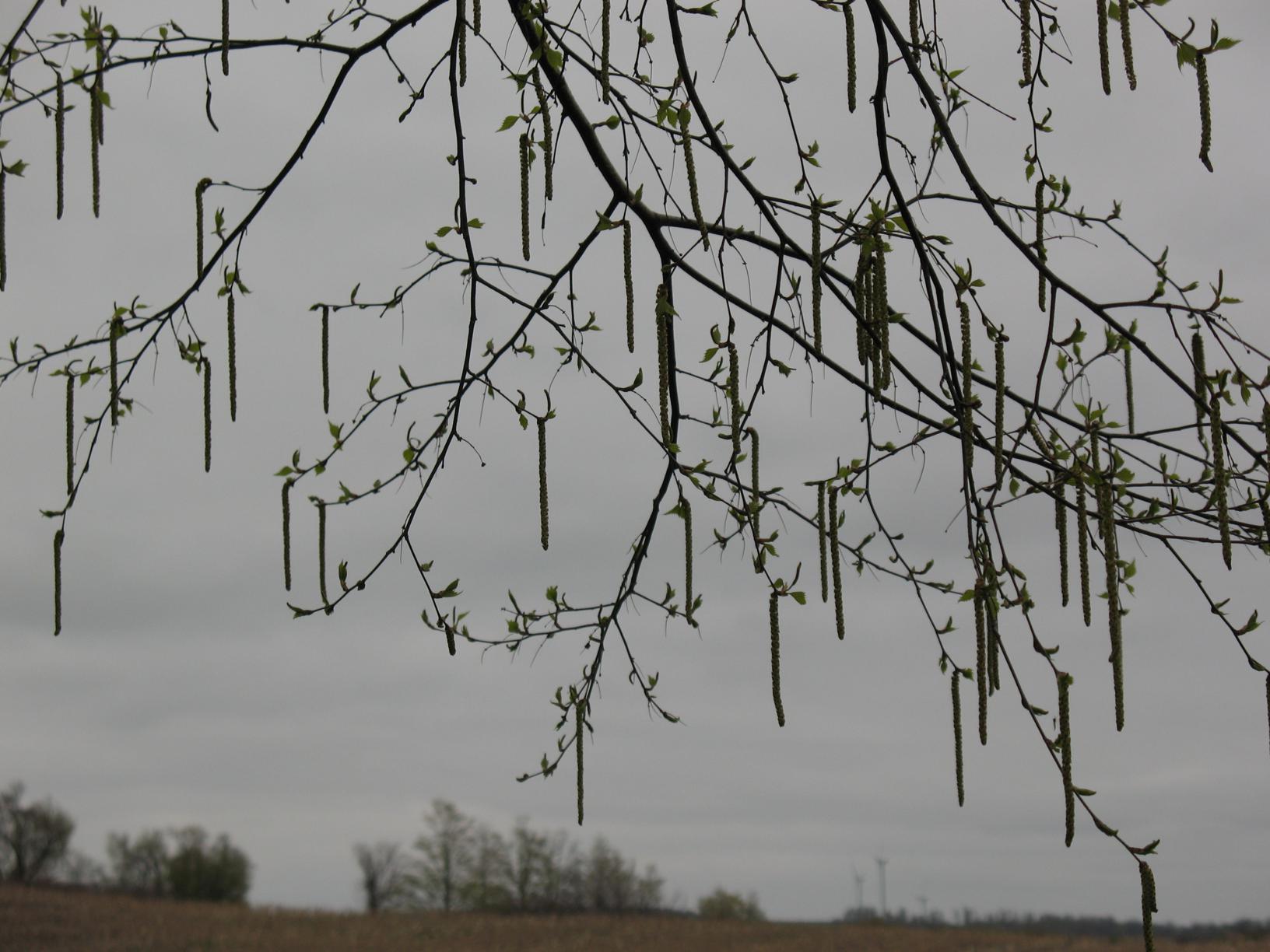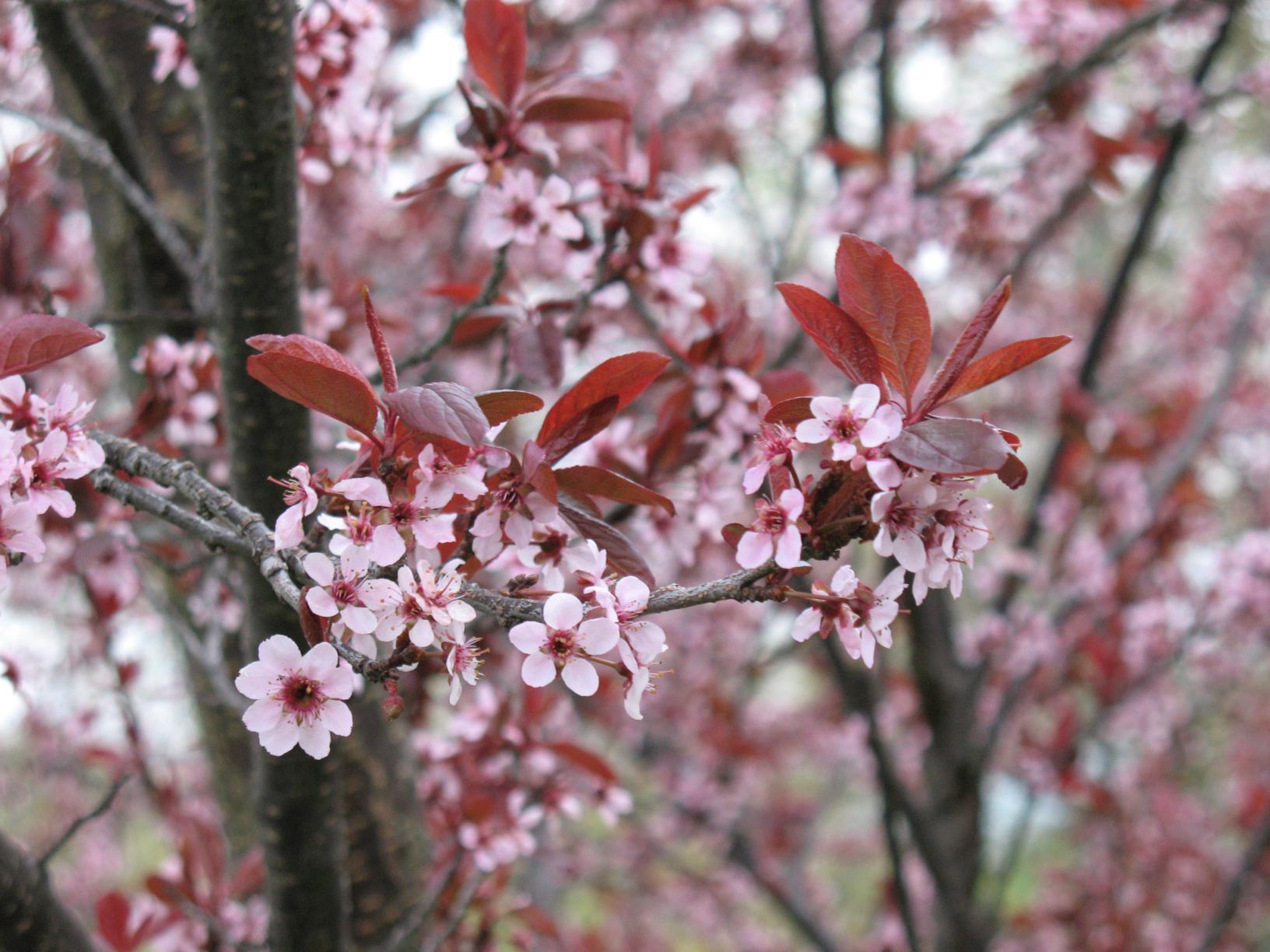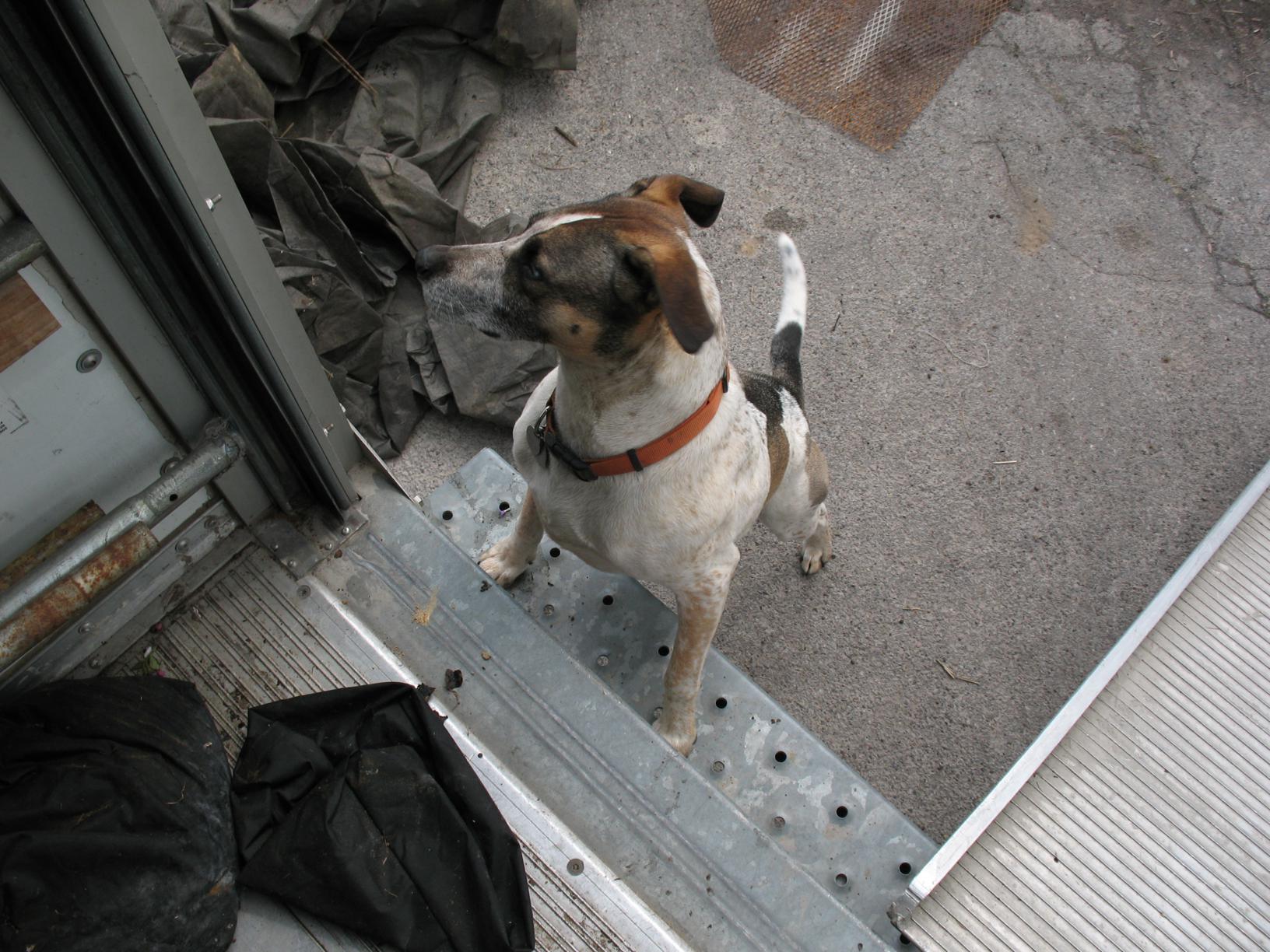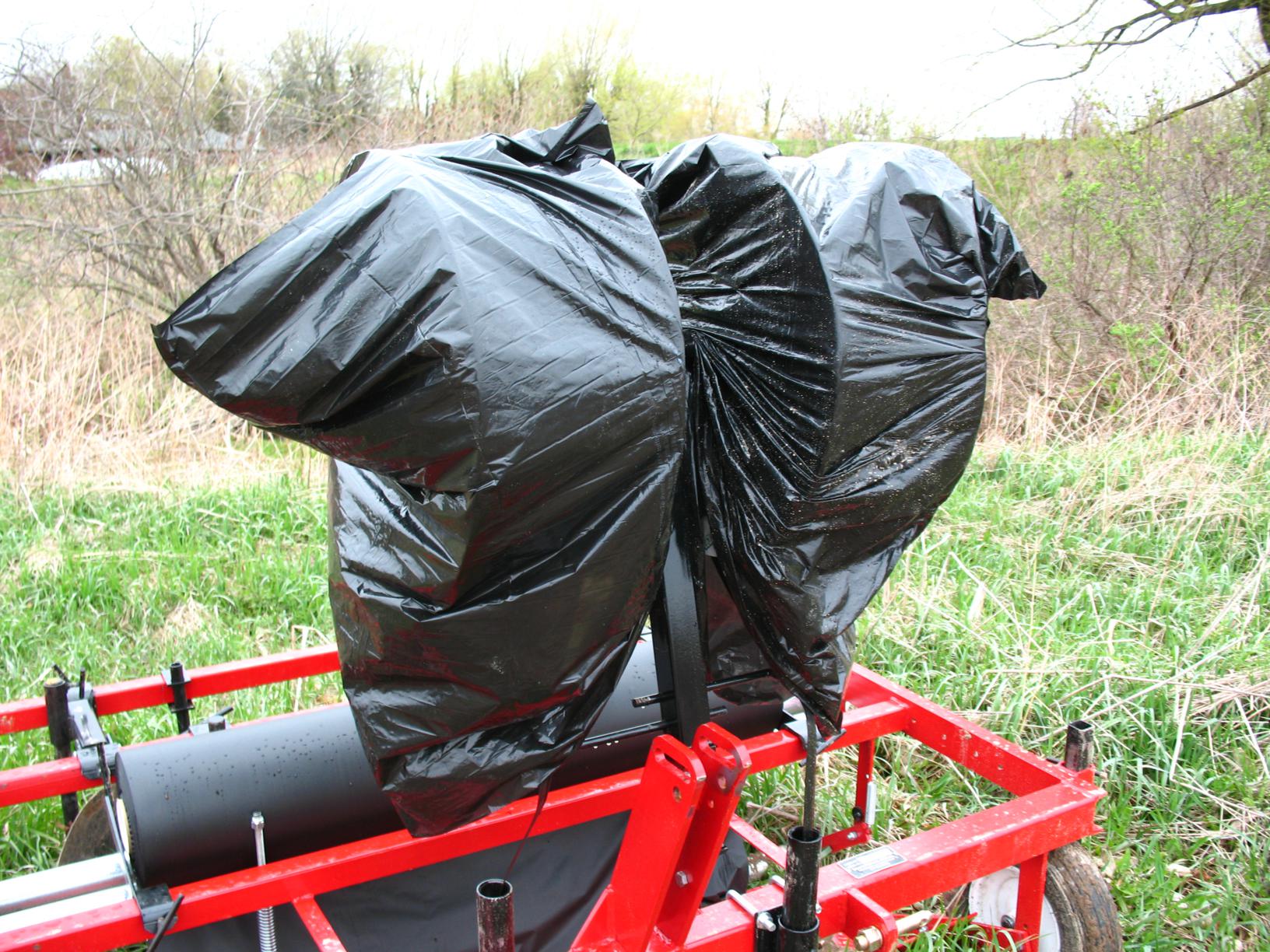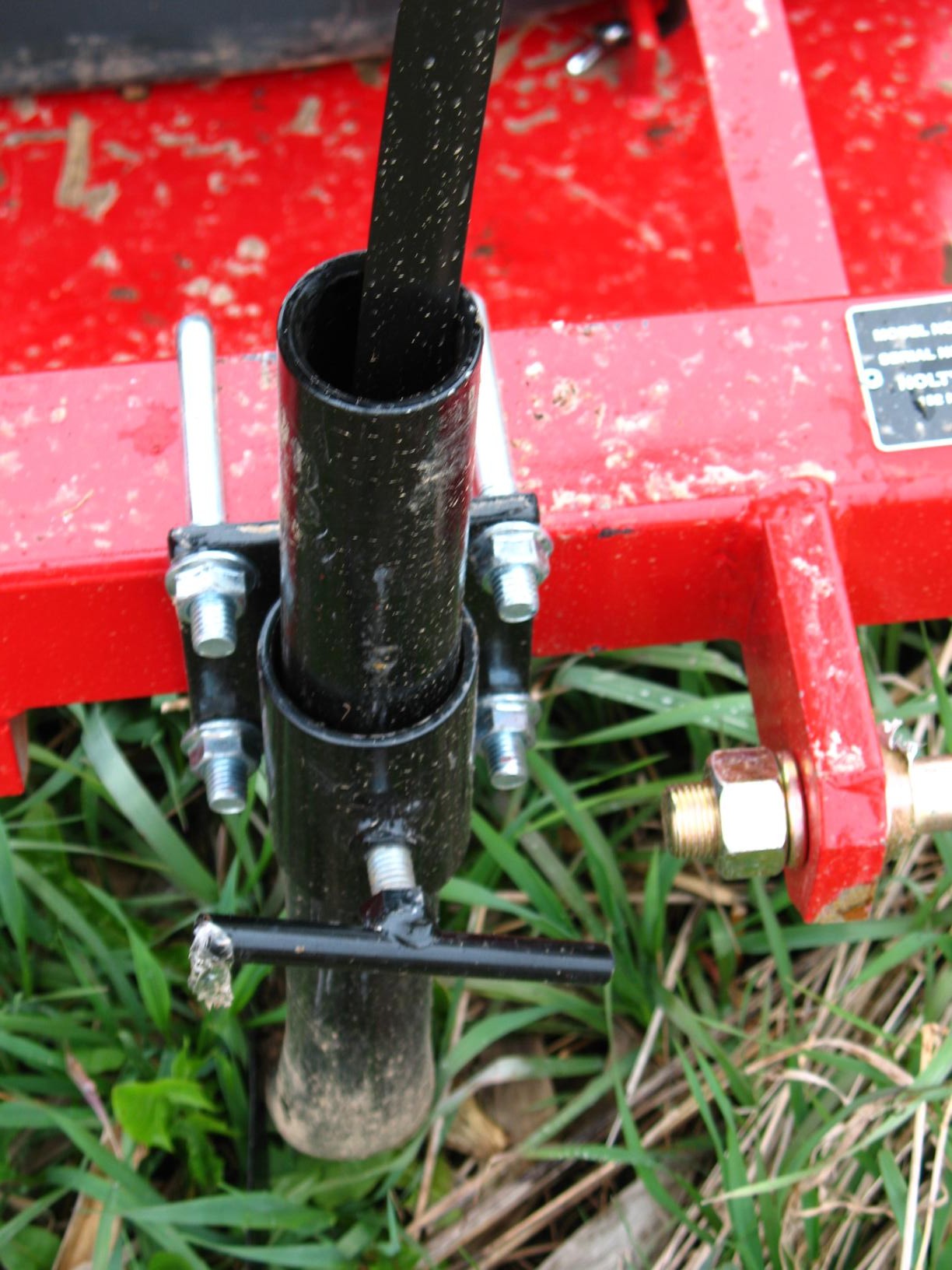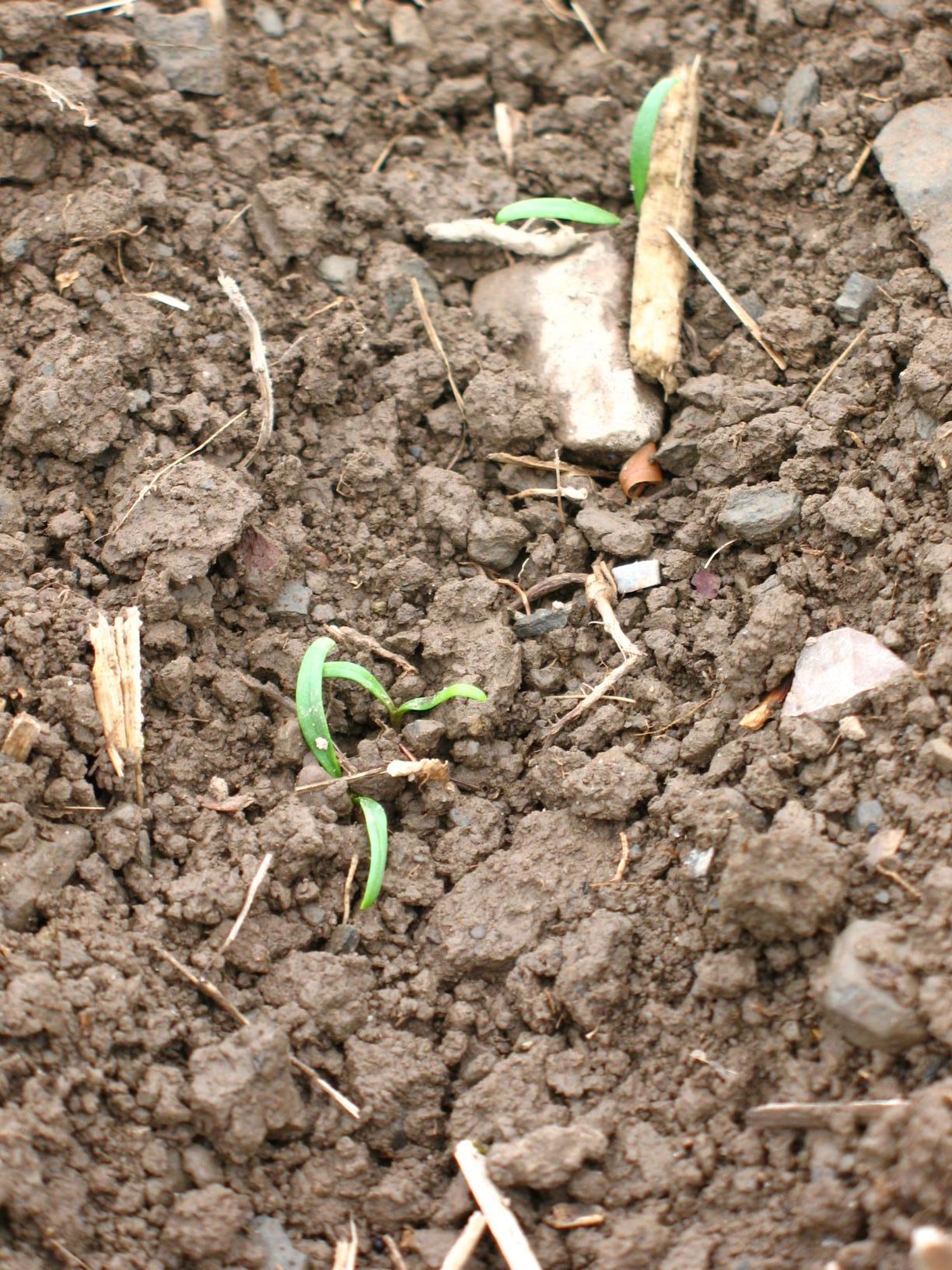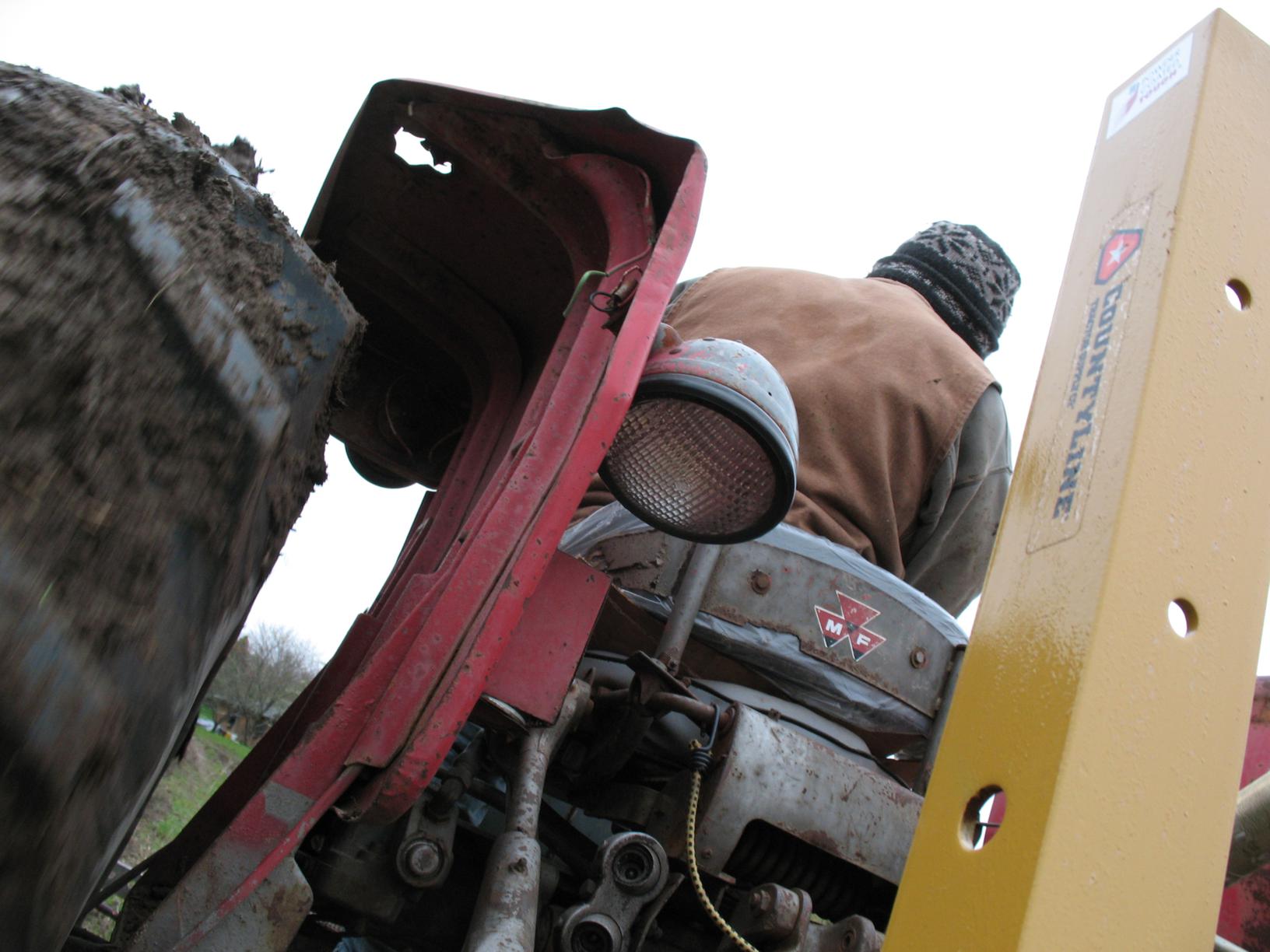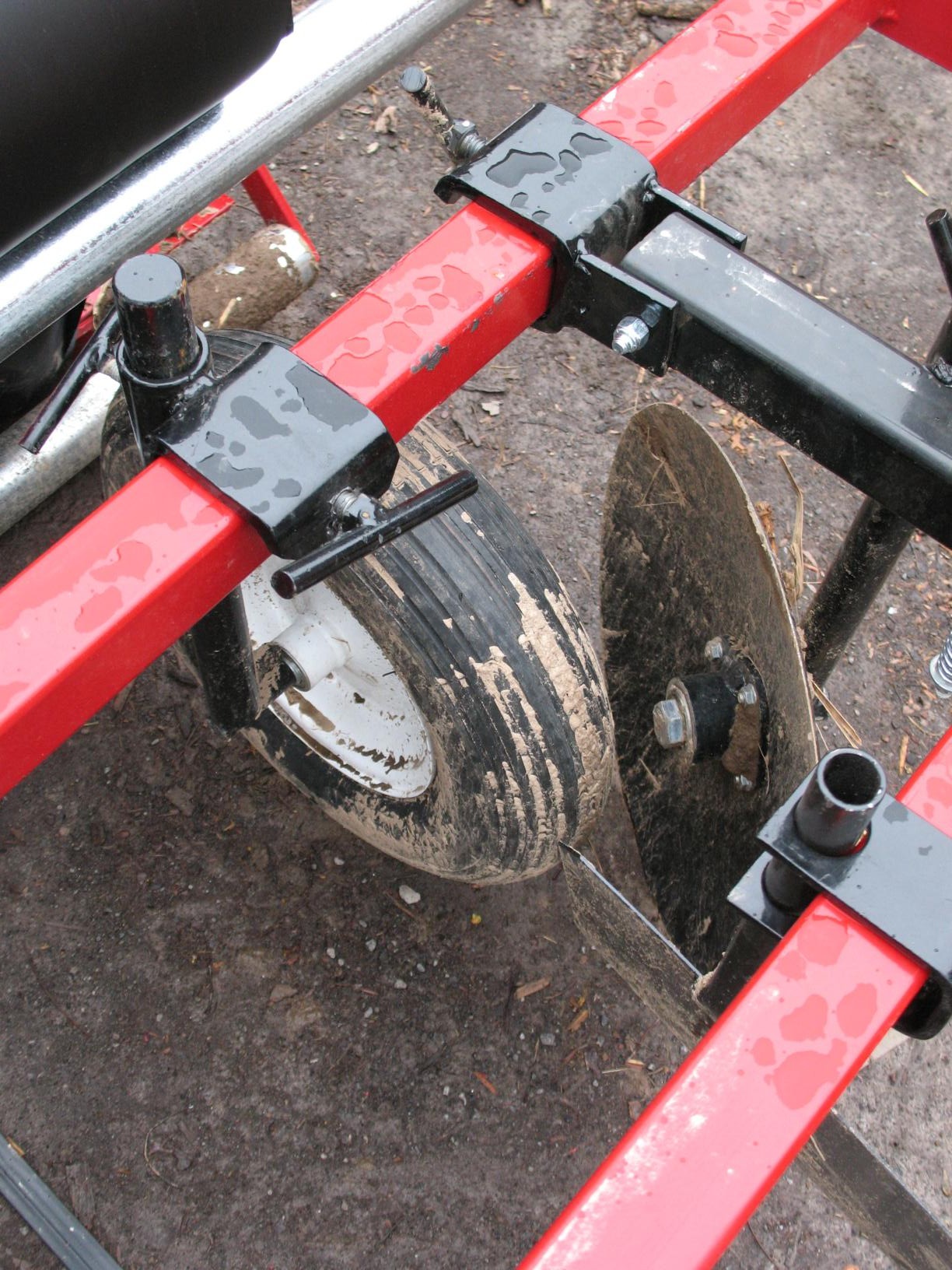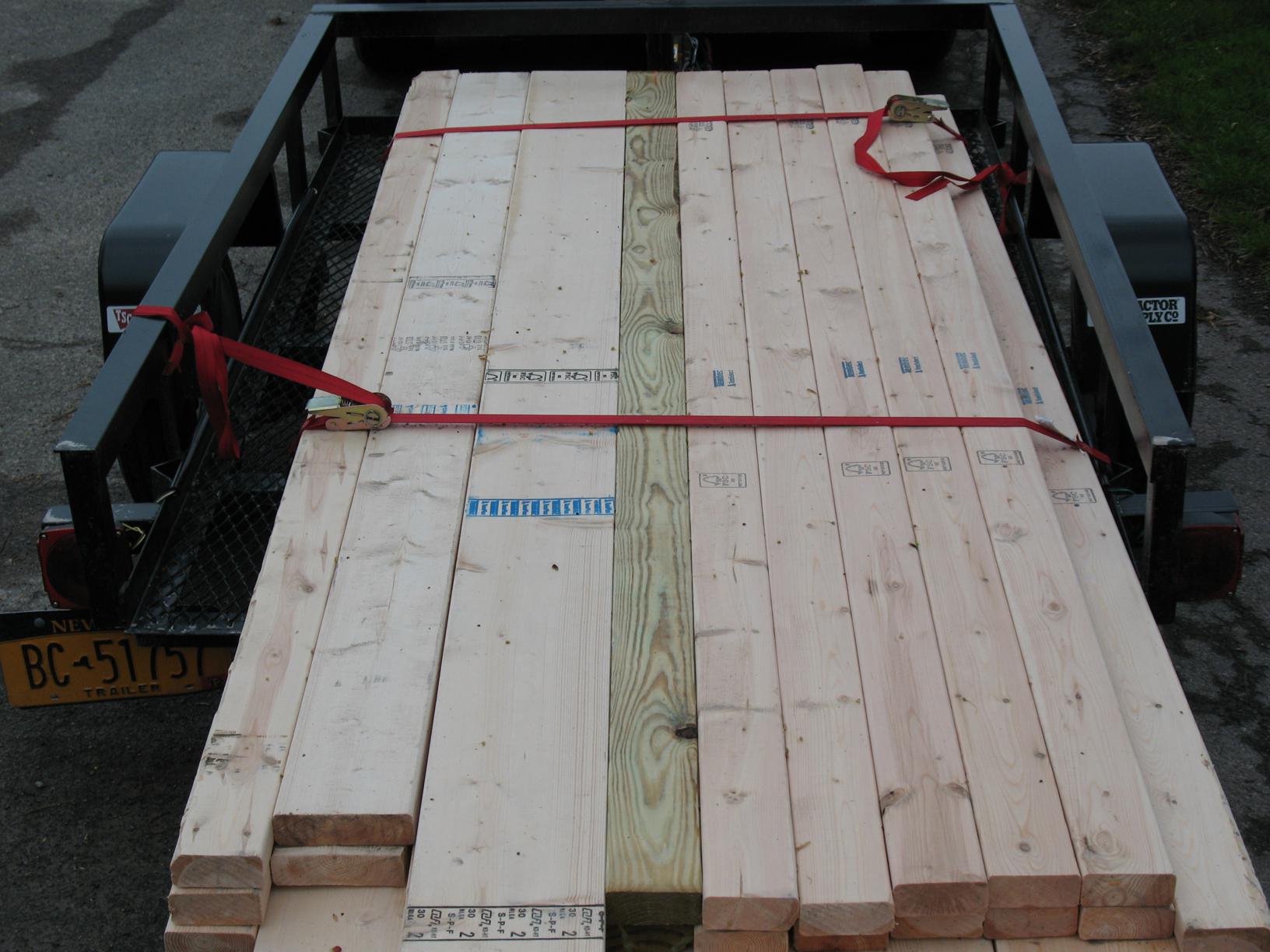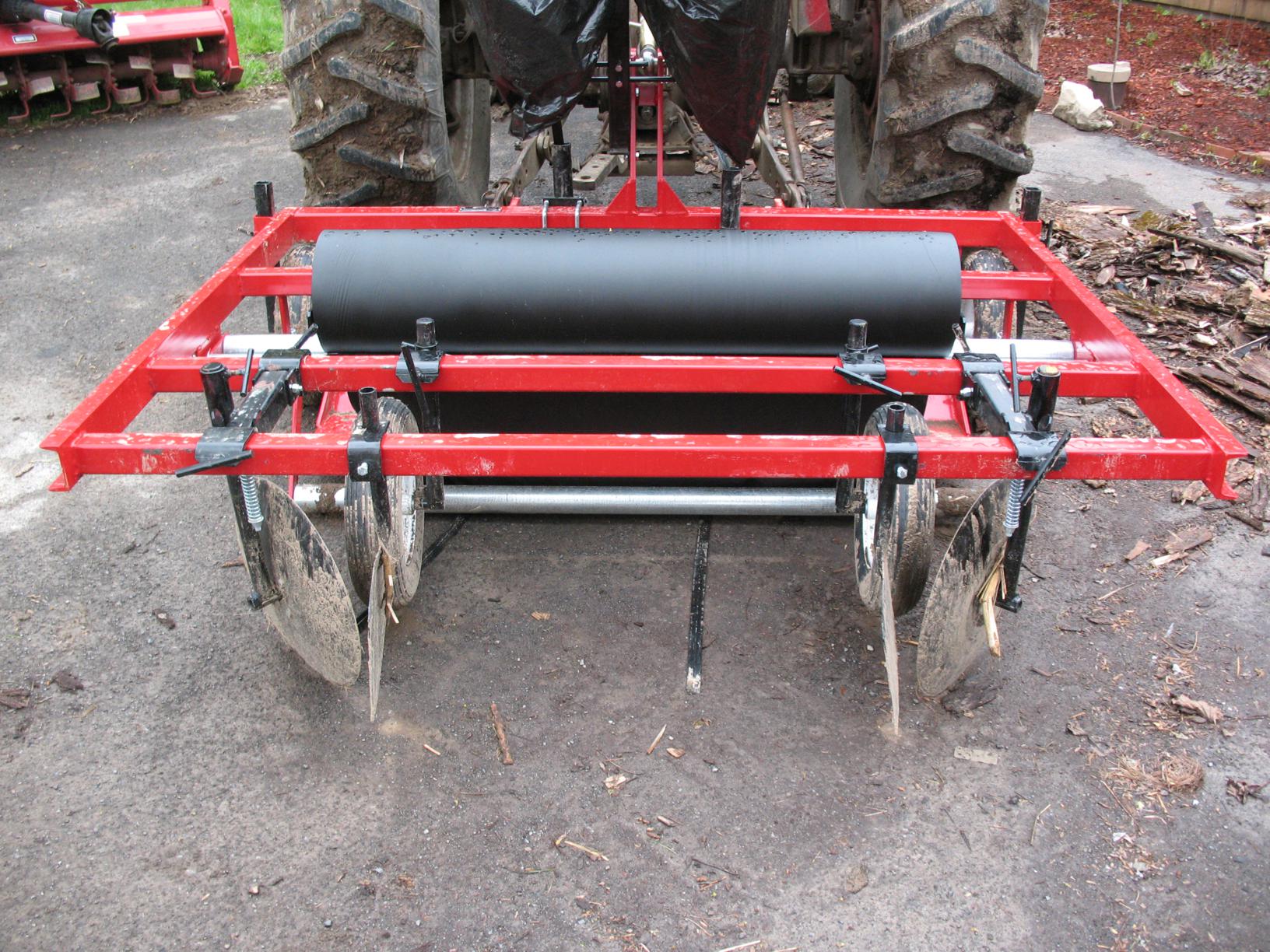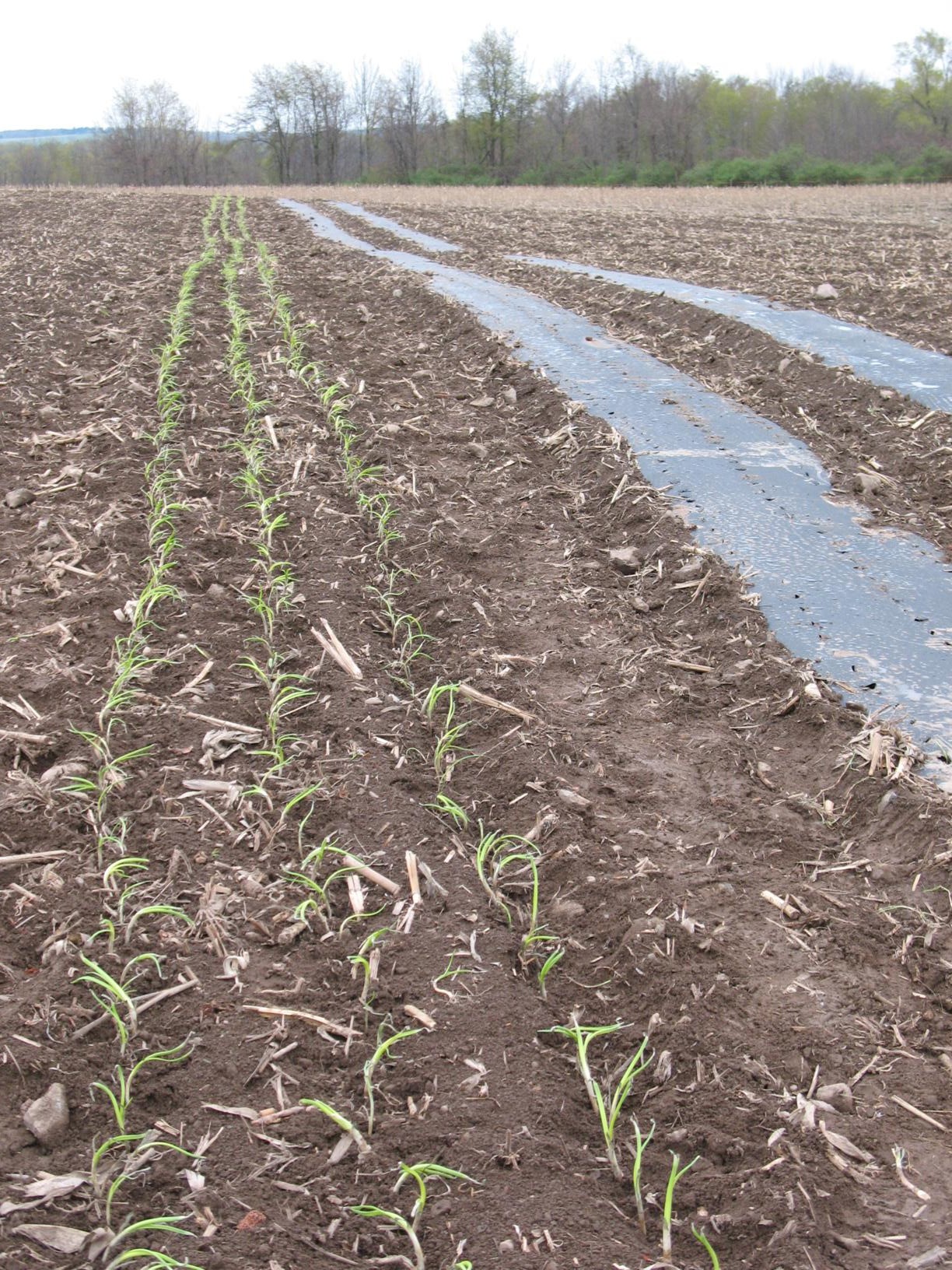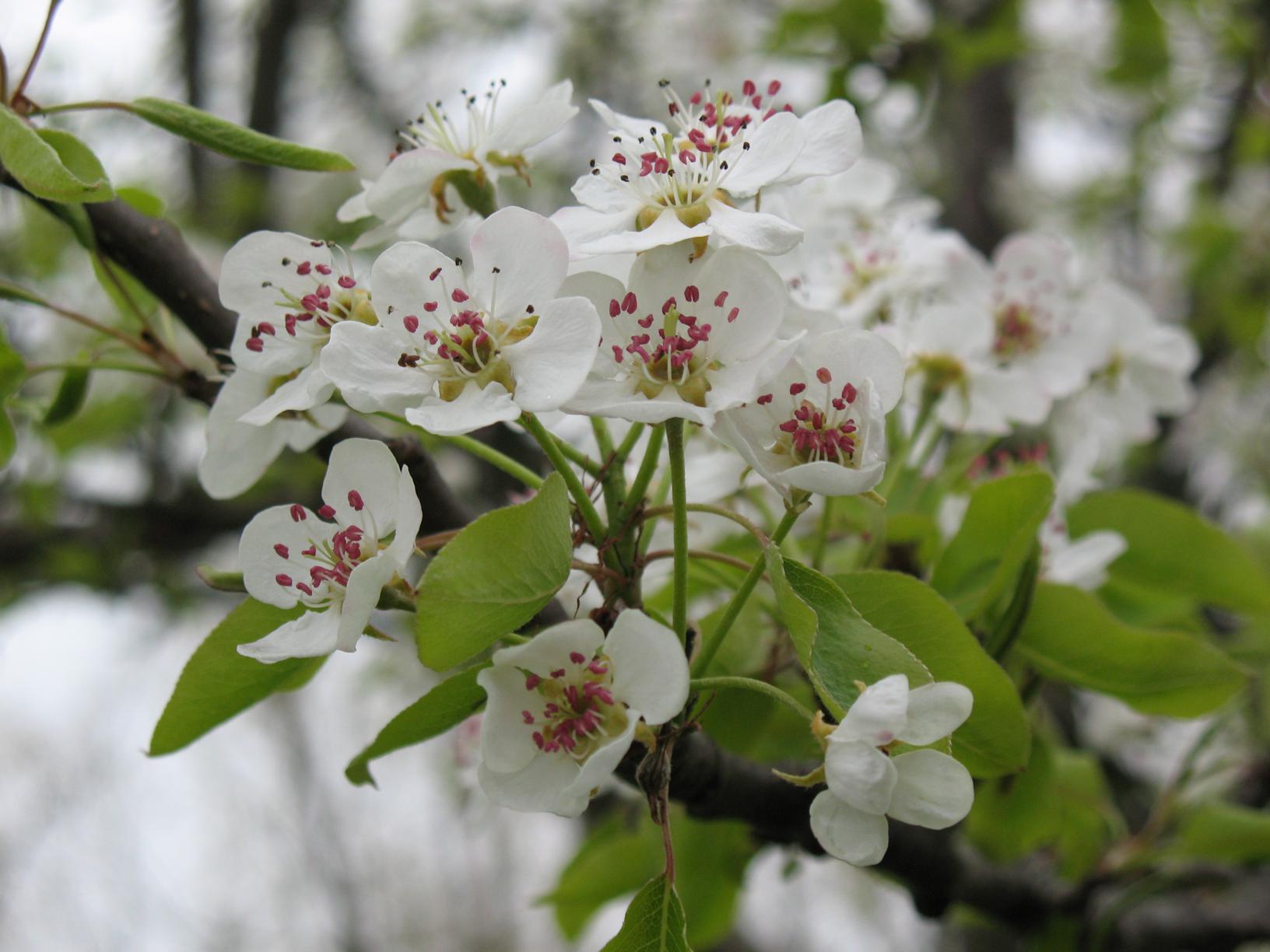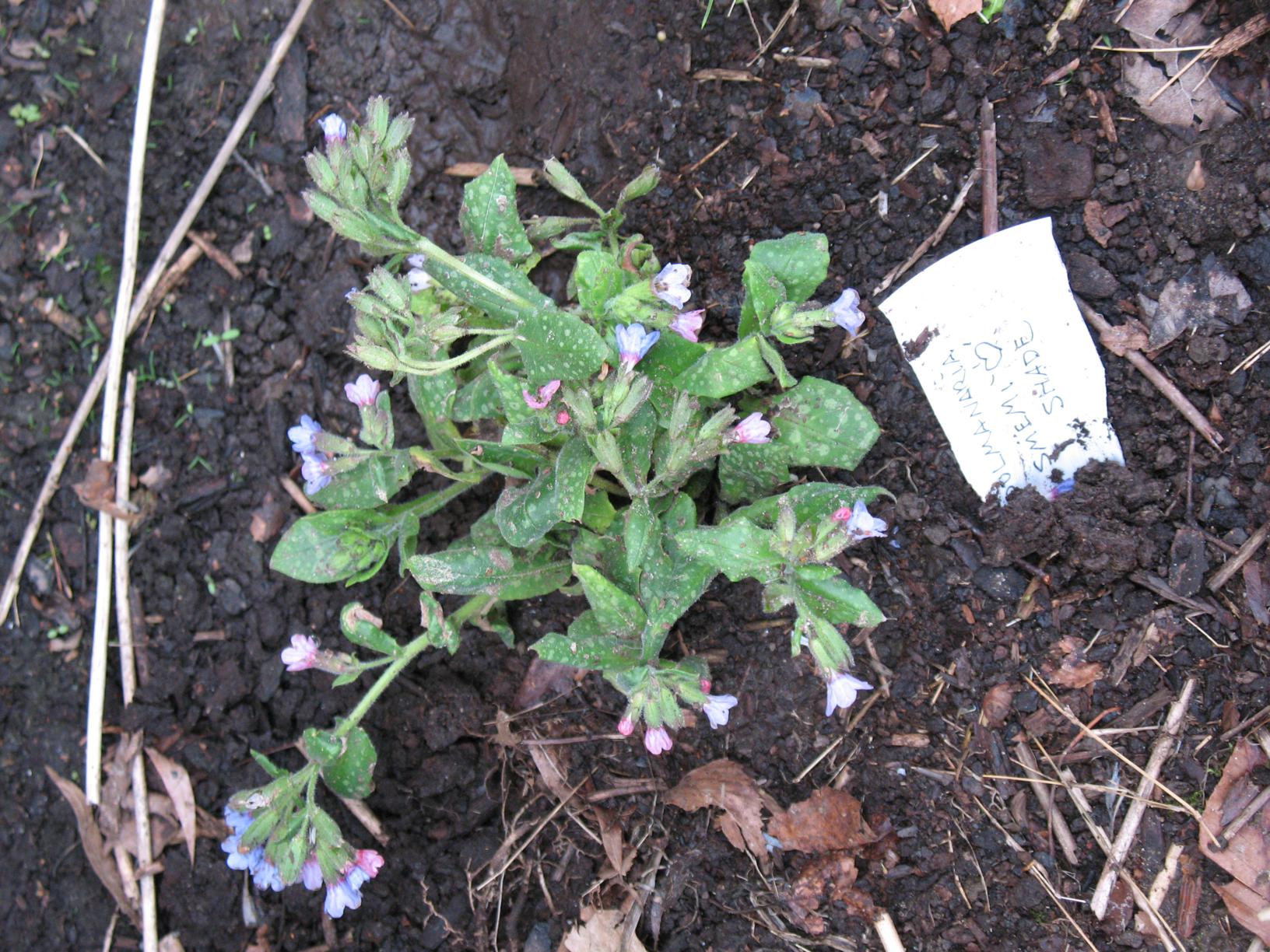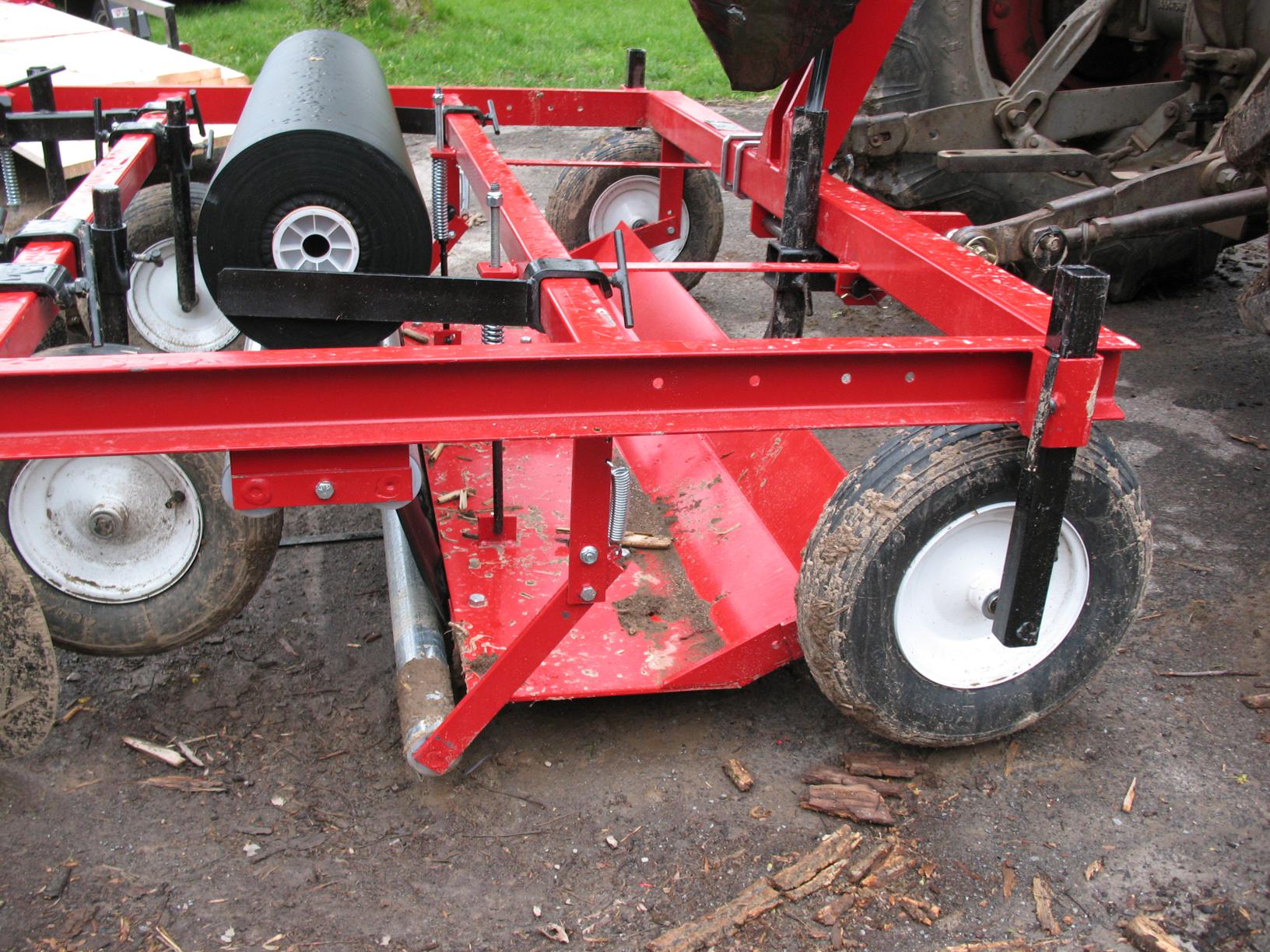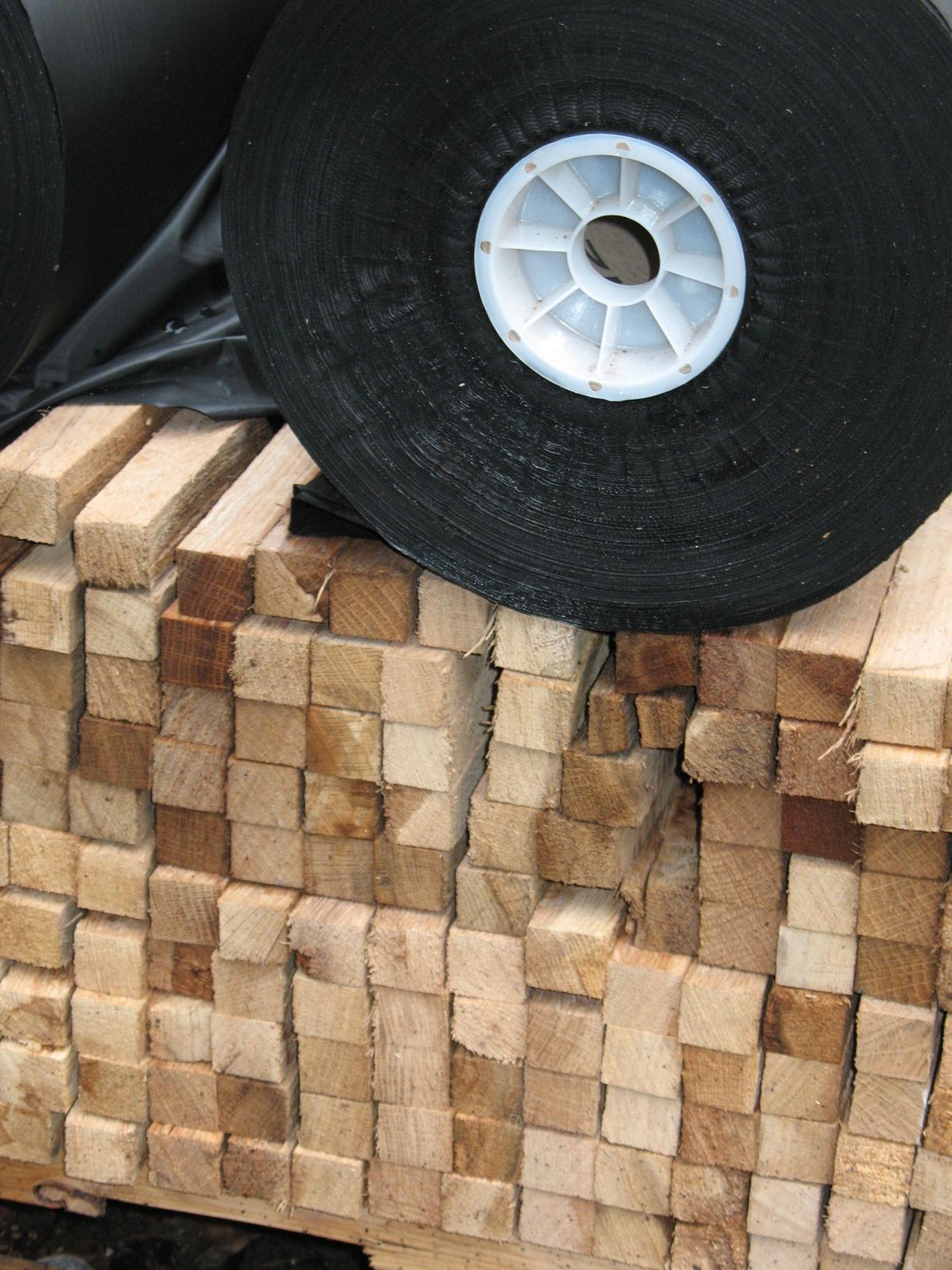Hooray! Our irrigation system is underway. We started putting it into action yesterday and today to water in brassica transplants.
Here's our old fashioned and new fashioned systems (actually, the watering can is just for priming the pump).
It's a gas powered 6hp trash pump, and is actually *new* which means it's one of the few things on the farm that turns on without any little tricks involved. The bigger gas tank on top means it can run for a pretty long stretch, if needed.
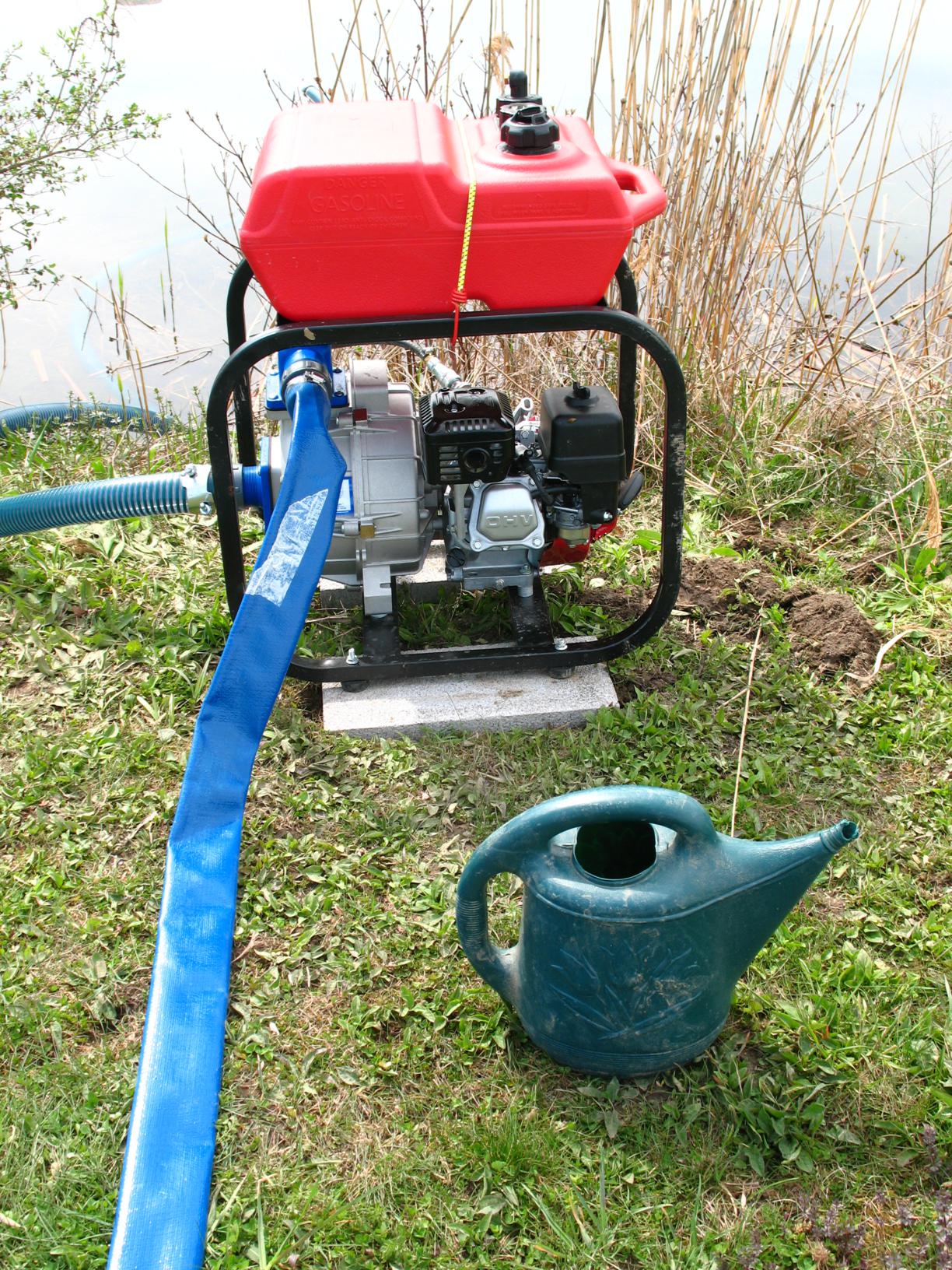 It draws from the pond. Matt sunk an anchor down with a float on top, so the inlet is suspended mid-way from the surface and the bottom. There is a filter on the end (so we don't suck up any fish). (There is also a secondary filter that will go on for the drip system, but we don't need that until later this month.)
It draws from the pond. Matt sunk an anchor down with a float on top, so the inlet is suspended mid-way from the surface and the bottom. There is a filter on the end (so we don't suck up any fish). (There is also a secondary filter that will go on for the drip system, but we don't need that until later this month.)
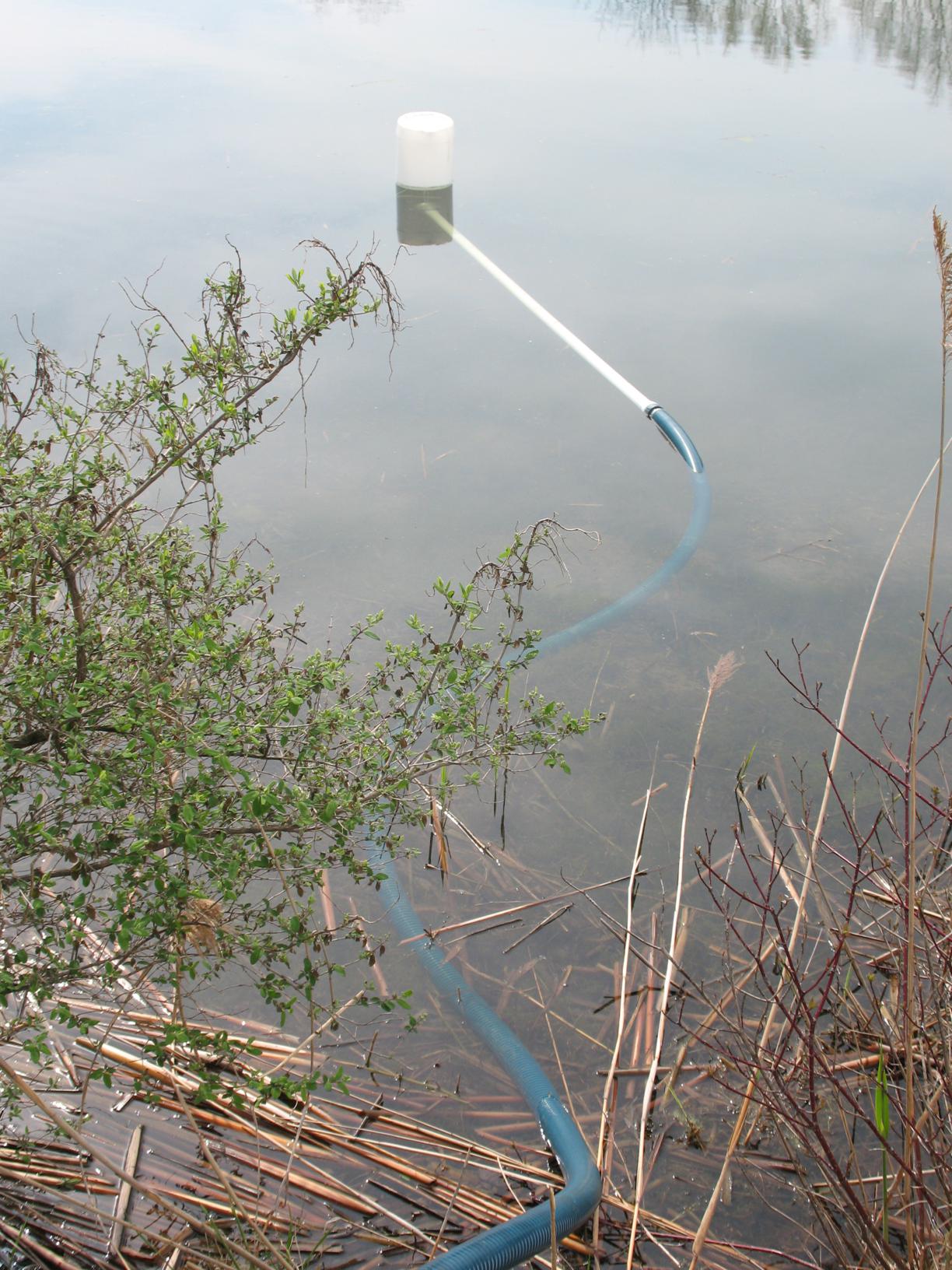 For the past two days, we have just used it to water in seedlings. That's when you drench the seedlings right after transplanting, which helps their roots make good contact with the surrounding soil so they take better to their new surroundings. One of the hose bib connections is below.
For the past two days, we have just used it to water in seedlings. That's when you drench the seedlings right after transplanting, which helps their roots make good contact with the surrounding soil so they take better to their new surroundings. One of the hose bib connections is below.

Right now, our pump and water pressure is total overkill (we had to dial everything way down to not blast the plants with the hose), but as we start seeding again early next week, we will be hooking up our overhead irrigation (the "big gun") which waters 1/3 an acre at a time, and will need all the water pressure we can get!
So far, we are very happy with how the soil in the fields handles water. It's a loam, but a bit on the silty side, so it holds a lot more water than the sandy loams we are used to working with. The surface dries out pretty quickly (and it drains well enough to work within a day or two after rain), but when you water the ground, it stays wet for a couple of days. However, with the 10 day outlook pretty sketchy on rain, we are happy knowing that we now have water in the fields should the plants need it.


